
Info
Woman Holding a Balance
Johannes Vermeer
1664
National Gallery of Art, Washington DC

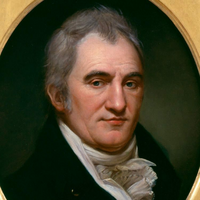
Joel Barlow (March 24, 1754– December 26, 1812) was an American poet, diplomat, and politician. In politics, he supported the French Revolution and was an ardent Jeffersonian. In his own time, Barlow was known especially for the epic Vision of Columbus, though modern readers may be more familiar with The Hasty-Pudding (1793). He also helped draft the Treaty of Tripoli in 1796, which includes the controversial and disputed phrase: “the Government of the United States of America is not, in any sense, founded on the Christian religion”.
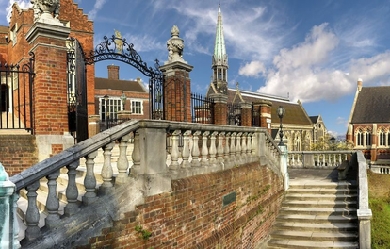
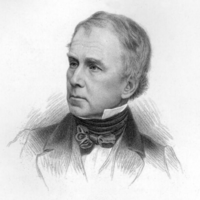
Bryan Waller Procter (pseud. Barry Cornwall) (21 November 1787 – 5 October 1874) was an English poet. Life and career Born at Leeds, Yorkshire, he was educated at Harrow School, where he had for contemporaries Lord Byron and Robert Peel. On leaving school he was placed in the office of a solicitor at Calne, Wiltshire, remaining there until about 1807, when he returned to London to study law. By the death of his father in 1816 he became possessed of a small property, and soon after entered into partnership with a solicitor; but in 1820 the partnership was dissolved, and he began to write under the pseudonym of “Barry Cornwall”. After his marriage in 1824 to Miss Skepper, daughter of Mrs Basil Montague, he returned to his profession as a conveyancer, and was called to the bar in 1831. In the following year he was appointed metropolitan commissioner of lunacy—an appointment annually renewed until his election as one of the Commissioners in Lunacy constituted by the Lunacy Act 1845. He resigned in 1861. Most of his verse was composed between 1815, when he began to contribute to the Literary Gazette, and 1823, or at latest 1832. His daughter, Adelaide Anne, was also a poet. His principal poetical works were: Dramatic Scenes and other Poems (1819), A Sicilian Story (1820), Marcian Colonna (1820), Mirandola, a tragedy performed at Covent Garden with Macready, Charles Kemble and Miss Foote in the leading parts (1821), The Flood of Thessaly (1823). and English Songs (1832). He was also the author of Effigies poetica (1824), Life of Edmund Kean (1835), Essays and Tales in Prose (1851), Charles Lamb; a Memoir (1866), and of memoirs of Ben Jonson and William Shakespeare for editions of their works. A posthumous autobiographical fragment with notes of his literary friends, of whom he had a wide range from William Lisle Bowles to Robert Browning, was published in 1877, with some additions by Coventry Patmore. Charles Lamb gave the highest possible praise to his friend’s Dramatic Sketches when he said that had he found them as anonymous manuscript in the Garrick Collection he would have had no hesitation about including them in his Dramatic Specimens. He was perhaps not an impartial critic. “Barry Cornwall’s” songs have caught some notes from the Elizabethan and Cavalier lyrics, and blended them with others from the leading poets of his own time; and his dramatic fragments show a similar infusion of the early Victorian spirit into pre-Restoration forms and cadences. The results are varied, and lack unity, but they abound in pleasant touches, with here and there the flash of a higher, though casual, inspiration. Rather unknown outside Britain in his times and largely considered to be imitator of greater romantic authors, Barry Cornwall however inspired Alexander Pushkin to some translations and imitations in 1830. Just hours before his last duel in 1837 Pushkin sent a collection by Cornwall to a fellow author, Mrs. Ishimova, suggesting that she should translate some poems selected by him. William Makepeace Thackeray dedicated Vanity Fair to B.W. Procter. Wilkie Collins dedicated The Woman In White to B.W.Procter. References Wikipedia—https://en.wikipedia.org/wiki/Bryan_Procter

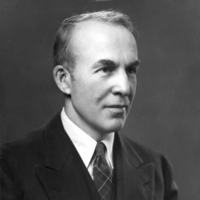
Archibald MacLeish (May 7, 1892– April 20, 1982) was an American poet, writer, and the Librarian of Congress. He is associated with the Modernist school of poetry. He received three Pulitzer Prizes for his work. MacLeish was born in Glencoe, Illinois. His father, Scottish-born Andrew MacLeish, worked as a dry goods merchant. His mother, Martha (née Hillard), was a college professor and had served as president of Rockford College. He grew up on an estate bordering Lake Michigan. He attended the Hotchkiss School from 1907 to 1911 before entering Yale University, where he majored in English, was elected to Phi Beta Kappa, and was selected for the Skull and Bones society. He then enrolled in Harvard Law School, where he served as an editor of the Harvard Law Review. In 1916, he married Ada Hitchcock. His studies were interrupted by World War I, in which he served first as an ambulance driver and later as a captain of artillery. His brother, Kenneth MacLeish was killed in action during the war. He graduated from law school in 1919, taught law for a semester for the government department at Harvard, then worked briefly as an editor for The New Republic. He next spent three years practicing law.
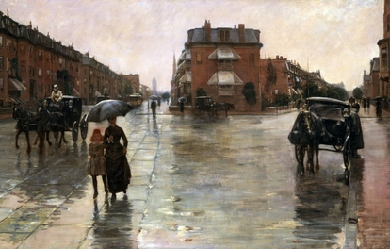

Louise Imogen Guiney (January 7, 1861– November 2, 1920) was an American poet, essayist and editor, born in Roxbury, Massachusetts. The daughter of Gen. Patrick R. Guiney, an Irish-born American Civil War officer and lawyer, and Jeannette Margaret Doyle, she was educated at a convent school in Providence, Rhode Island, from which she graduated in 1879. Over the next 20 years, she worked at various jobs, including serving as a postmistress and working as a cataloger at the Boston Public Library.
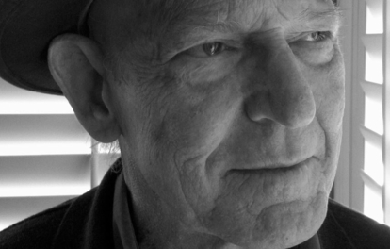
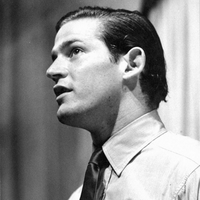
William Craig Berkson (August 30, 1939– June 16, 2016) was an American poet, critic, and teacher who was active in the art and literary worlds from his early twenties on. Early life and education Born in New York City on August 30, 1939, Bill Berkson grew up on Manhattan’s Upper East Side, the only child of Seymour Berkson, general manager of International News Service and later publisher of the New York Journal American, and the fashion publicist Eleanor Lambert. He attended The Day School of the Church of the Heavenly Rest and transferred to Trinity School in 1945. He graduated from Lawrenceville School in 1957. He dropped out of Brown University to return to New York after his father died. He studied poetry at The New School for Social Research with Kenneth Koch. He attended Columbia University and New York University’s Institute of Fine Arts. Having begun writing poetry at Lawrenceville, encouraged there by such teachers as John Silver and the eminent Emily Dickinson scholar, Thomas H. Johnson, he went on to study short story writing with John Hawkes and prosody with S. Foster Damon at Brown. But his full commitment to poetry was prompted under the tutelage of Kenneth Koch in spring, 1959 at the New School for Social Research. It was also through Koch that he was introduced to the poetry and arts community loosely termed the New York School, which in turn led to close friendships with Frank O’Hara and such senior artists as Philip Guston and Alex Katz, as well as with poets and artists of his own generation such as Ron Padgett, Joe Brainard, George Schneeman, Ted Berrigan, Anne Waldman, Jim Carroll and others. Career After leaving Columbia in 1960, Berkson started work as an editorial associate at ARTnews, where he continued for the next three years. During the remainder of the 1960s, he was a regular contributor to both ARTnews and Arts, guest editor at the Museum of Modern Art, an associate producer of a program on art for public television, and taught literature and writing workshops at the New School for Social Research and Yale University. After moving to Northern California in 1970, Berkson began editing and publishing a series of poetry books and magazines under the Big Sky imprint and taught regularly in the California Poets in the Schools program. In 1975 he married the artist Lynn O’Hare; their son Moses Edwin Clay Berkson was born in Bolinas, California, on January 23, 1976. He also has a daughter, Siobhan O’Hare Mora Lopez (b. 1969), and three grandchildren, Henry Berkson and Estella and Lourdes Mora Lopez. His friendships during his California years included those with; Joanne Kyger, Duncan McNaughton and Philip Whalen. Berkson is the author of some twenty collections and pamphlets of poetry—including most recently Portrait and Dream: New & Selected Poems and Expect Delays, both from Coffee House Press. His poems have also appeared in many magazines and anthologies and have been translated into French, Russian, Hungarian, Dutch, Czechoslovakian, Romanian, Italian, German and Spanish. Les Parties du Corps, a selection of his poetry translated into French, appeared from Joca Seria, Nantes, in 2011. Other recent books are What’s Your Idea of a Good Time?: Letters & Interviews 1977-1985 with Bernadette Mayer; BILL with drawings by Colter Jacobsen; Ted Berrigan with George Schneeman; Not an Exit with Léonie Guyer and Repeat After Me with John Zurier. Beside the aforementioned collaborations, he executed extensive projects with visual artists Philip Guston, Alex Katz, Joe Brainard, Lynn O’Hare and Greg Irons, as well as with the poets Frank O’Hara, Larry Fagin, Ron Padgett, Anne Waldman and Bernadette Mayer. In the mid-1980s, Berkson resumed writing art criticism on a regular basis, contributing monthly reviews and articles to Artforum from 1985 to 1991; he became a corresponding editor for Art in America in 1988 and contributing editor for artcritical.com and has also written frequently for such magazines as Aperture, Modern Painters, Art on Paper and others. In 1984, he began teaching art history and literature and organizing the public lectures program at the San Francisco Art Institute, where he also served as interim dean in 1990 and Director of Letters and Science from 1993 to 1998. He retired from SFAI in 2008 and later held the position of Professor Emeritus. During the same period, he was also on the visiting faculty of Naropa Institute, California College of Arts and Crafts and Mills College. Berkson continued until the end of his life to lecture widely in colleges and universities. He published three collections of art criticism, to date, the last being For the Ordinary Artist: Short Reviews, Occasional Pieces & More. As a sometime curator, he organized or co-curated such exhibitions as Ronald Bladen: Early and Late (SFMoMA), Albert York (Mills College), Why Painting I & II (Susan Cummins Gallery), Homage to George Herriman (Campbell-Thiebaud Gallery), Facing Eden: 100 years of Northern California Landscape Art (M.H. de Young Museum), George Schneeman (CUE Foundation), Gordon Cook: Out There (Nelson Gallery, University of California, Davis), George Schneeman in Italy (Instituto di Cultura Italiano, San Francisco), and, with Ron Padgett, A Painter and His Poets: The Art of George Schneeman (Poets House, New York). In 1998, he married the curator Constance Lewallen, with whom he lived in the Eureka Valley section of San Francisco. Berkson died of a heart attack in San Francisco on June 16, 2016 at the age of 76. Berkson’s archive of literary, artistic and other materials, including extensive correspondence and collaborations with O’Hara, Guston, Brainard, Mayer and others through the years is maintained in the Special Collections at the Thomas J. Dodd Research Center, University of Connecticut, Storrs. Bibliography * Poetry * Saturday Night: Poems 1960-61 (Tibor de Nagy, 1961; reprint, Sand Dollar, 1975) * Shining Leaves (Angel Hair, 1969) * Recent Visitors (with drawings by George Schneeman) (Angel Hair, 1973) * Enigma Variations (with drawings by Philip Guston) (Big Sky, 1975) * 100 Women (Simon & Schuchat, 1975) * Blue Is the Hero (Poems 1960-75) (L, 1976) * Red Devil (Smithereens Press, 1983) * Start Over (Tombouctou Books, 1983) * Lush Life (Z Press, 1984) * A Copy of the Catalogue (Labyrinth, Vienna, 1999) * Serenade (Poetry & Prose 1975-1989) (Zoland Books, 2000) * Fugue State (Zoland Books, 2001) * 25 Grand View (San Francisco Center for the Book, 2002) * Gloria (with etchings by Alex Katz) (Arion Press, 2005) * Parts of the Body: a 1970s/80s scrapbook (Fell Swoop, 2006) * Same Here, online chapbook (Big Bridge, 2006) * Our Friends Will Pass Among You Silently (The Owl Press, 2007) * Goods and Services (Blue Press, 2008) * Portrait and Dream: New & Selected Poems (Coffee House Press, 2009) * Lady Air (Perdika Press, 2010) * Parties du Corps, trans. Olivier Brossard, Vincent Broqua et alia (Joca Seria, Nantes, 2011) * Snippets (Omerta, 2014) * Expect Delays (Coffee House Press, 2014) * Invisible Oligarchs (Ugly Duckling Presse, 2016) * Collaborations * Recent Visitors with Joe Brainard (Boke Press, 1971) * Hymns of St. Bridget with Frank O’Hara (Adventures in Poetry, 1975) * Ants with drawings by Greg Irons (Arif, 1975) * Two Serious Poems & One Other with Larry Fagin (Big Sky, 1972) * Hymns of St. Bridget & Other Writings with Frank O’ Hara (The Owl Press, 2001) * The World of Leon with Ron Padgett, Larry Fagin, & Michael Brownstein (Big Sky, 1976) * BILL, with Colter Jacobsen (Gallery 16, 2008) * Ted Berrigan, with George Schneeman (Cuneiform Press. 2009) * Not an Exit, with Léonie Guyer (Jungle Garden Press, 2010) * Repeat After Me, with John Zurier (Gallery Paule Anglim, 2011) * Amsterdam Souvenirs, with Joanne Kyger (Blue Press, 2016) * Memoirs * Young Manhattan (w/ Anne Waldman) (Erudite Fangs, 1999) * The Far Flowered Shore: Japan 2006/2010 (Cuneiform Press, 2013) * Since When [memoirs, forthcoming] * Prose * What’ s Your Idea of a Good Time?: Letters & Interviews (w/ Bernadette Mayer) (Tuumba Press, 2006) * Criticism * The Sweet Singer of Modernism & Other Art Writings 1985-2003 (Qua Books, 2004) * Sudden Address: Selected Lectures 1981-2006 (Cuneiform Press, 2007) * For The Ordinary Artist: Short Reviews, Interviews, Occasional Pieces & More (BlazeVox, 2010) * "Hands On/Hands Off," in The Art of Collaboration, Cuneiform Press, 2015 * “New Energies: Philip Guston Among the Poets,” in Philip Guston/ Drawings for Poets (Sievekind Verlag, 2015) * “Empathy and Sculpture,” in Joel Shapiro (Craig Starr Gallery, 2014) * “Eclipse, the View from the Cave” in Larry Deyab, 2014 * “Canan Tolon’s Open Limits,” in Cana Tolon (Parasol Unit, London, 2013) * “Larry Thomas’s Natural Wonders,” in Larry Thomas (Sonoma Valley Art Museum, 2012) * “Piero, Guston and their Followers,” Philip Guston/ Roma: a symposium (New York Review of * Books, 2014) * “ The Elements of Drawing” in Wayne Thiebaud: Still-Life Drawings (Paul Thiebaud Gallery, 2010) * “ Dean Smith in Action,” Dean Smith, (Gallery Paule Anglim San Francisco) * “ Dewey Crumpler’ s Metamorphoses,” in Dewey Crumpler (California African American Museum, Los Angeles, 2008) * “ Seeing with Bechtle,” in Robert Bechtle/ Plein Air (Gallery Paule Anglim, 2007) * “ On Adelie Landis Bischoff” (Salander O’ Reilly, 2006) * “ Ultramodern Park,” in David Park: the 1930s and 40s, 2006 * “ Introduction,” in Jo Babcock, The Invented Camera, 2005 * “ A New Luminist,” in Tim Davis, Permanent Collection, 2005 * “ George’ s House of Mozart,” in Painter Among Poets: The Collaborative Art of George Schneeman (Granary books, 2004) * “ George Schneeman’ s Italian Hours,” CUE Art Foundation, 2003 * “ Without The Rose: Jay DeFeo & 16 Americans,” in Jay DeFeo & The Rose (University of California Press, 2003) * “ Pyramid and Shoe” (Guston and Comics) in Philip Guston (Thames & Hudson, 2003) * “ The Abstract Bischoff,” Salander-O’ Reilly, 2002 * “ DeKooning, With Attitude,” in Writers on Artists, Modern Painters, 2002 * “ Spellbound” (Vija Celmins), McKee Gallery, 2002 * “ Warhol’ s History Lesson,” John Berggruen, 2001 * “ Join the Aminals” (Tom Neely), Jernigan-Wicker, 2001 * “ What the Ground Looks Like” in Aerial Muse: the Art of Yvonne Jacquette, Hudson Hills / Stanford Art Museum, 2001 * “ The Searcher” in Elmer Bischoff, University of California Press, 2001 * “ Ceremonial Surfaces” in Celebrating Modern Art: The Anderson Collection, San Francisco Museum of Modern Art, 2000 * “ Existing Light” in Henry Wessel, Bransten Gallery, 2000 * “Jackson Pollock: The Colored Paper Drawings”, Washburn, 2000 * “ The Portraitist” in Elaine de Kooning / Portraits, Salander O’ Reilly Gallery, New York, 1999 * “ Hung Liu, Action Painter,” in Hung Liu, Rena Bransten Gallery, San Francisco,1998 * “ Things in Place,” in Table Tops: Morandi to Mapplethorpe, California Center for the Arts, Escondido, CA, 1997 * “ Autograph Hounds,” in Hall of Fame of Halls of Fame, Yerba Buena Center for the Arts, San Francisco, 1997 * Homage to George Herriman, Campbell-Thiebaud Gallery, 1997 * “ The Romance of the Rose,” in Jay DeFeo, Moore College of Art, 1996 * “ Changes like the Weather,” in Facing Eden, University of California Press, 1995 * “ The Ideal Reader,” in Philip Guston: Poem Pictures, Addison Gallery, 1994 * “ Poet and Painter Coda,” in Franz Kline, Tàpies Foundation/Tate Gallery, 1994 * “ Apparition as Knowledge” in Deborah Oropallo, Wirtz Gallery, 1993 * “ The Thiebaud Papers,” in Wayne Thiebaud: Vision and Revision, Fine Arts Museums, 1992 * “Air and Such” in Biotherm by Frank O’Hara, Arion Press, 1990 * Ronald Bladen: Early and Late, SFMOMA, 1991 * Editor * In Memory of My Feelings by Frank O’Hara (posthumous collection of poetry, illustrated by 30 American artists) (The Museum of Modern Art, New York, 1967; reprint 2005) * Best & Company, a one-shot anthology of art & literature, 1969 * Alex Katz (with Irving Sandler) (Praeger, 1971) * Big Sky magazine (12 issues) and books (20 volumes), 1971–78 * Homage to Frank O’Hara (ith/ Joe LeSueur) (Big Sky, 1978; reprint * Creative Arts, 1980; 3rd edition, Big Sky, 1988) * The World Record (with Bob Rosenthal), LP of poets’ readings, St. Marks Poetry Project, 1980. * Art Journal, Special de Kooning Issue (with Rackstraw Downes), 1989 * What’s With Modern Art? By Frank O’ Hara (Mike & Dale’ s Press, 1998) * Anthologies * The Young American Poets,10 American Poets, The Young American Writers, The World Anthology, An Anthology of New York Poets, Best & Company, On the Mesa, Calafia, One World Poetry, Another World, Poets & Painters, The Ear, Aerial, Broadway, Broadway 2, Hills/Talks, Wonders, Up Late: American Poetry Since 1970, Best Minds, Out of This World, Reading Jazz, A Norton Anthology of Postmodern American Poetry, American Poets Say Goodbye to the 20th Century, Euro-San Francisco Poetry Festival, The Blind See Only this World, The Angel Hair Anthology, Evidence of the Paranormal, Enough, The New York Poets II, Bay Area Poetics, Hom(m)age to Whitman, POEM, The i.e. Reader, Nuova Poesia Americana: New York, A Norton Anthology of Postmodern American Poetry, Second Edition. * 'Other * Recordings of poetry on Disconnected (Giorno Poetry Systems) and The World Record (St Marks Poetry Project); Daniel Kane, All Poets Welcome; and in the American Poetry Archive (San Francisco State University), PennSound (University of Pennsylvania) & elsewhere. * Poetry translated into French, Italian, Turkish, Spanish, German, Dutch, Romanian, Arabic, Czechoslovakian and Hungarian. * Art reviews & essays regularly contributed to ARTnews 1961-64; Arts 1964-66; Art in America 1980- ; Artforum 1985-1990; Modern Painters, 1998–2003; artcritical.com 2009. Awards * * Dylan Thomas Memorial Poetry Award, The New School for Social Research, 1959 * Poets Foundation Grant, 1968 * Yaddo Fellowship, 1968 * Creative Writing Fellowship in Poetry, National Endowment for the Arts, 1980 * Briarcombe Fellowship, 1983 * Marin Arts Council Poetry Award, 1987 * Artspace Award for New Writing in Art Criticism, 1990 * Visiting Artist/Scholar, American Academy in Rome, 1991 * Fund for Poetry Grant, 1994, 2001 * San Francisco Public Library Laureate, 2001 * Guest of Honor, Small Press Distribution Open House, 2004 * Paul Mellon Distinguished Fellow (lecture), Skowhegan School of Painting and Sculpture, 2006 * “Goldie” for Literature, the San Francisco Bay Guardian, 2008 * Balcones Poetry Prize, Austin, Texas, 2010 * Coordinating Council of Literary Magazines (CCLM) grants for publishing, 1972, 1974, 1976, 1978 * Honorable Mention, Editor’s Fellowship, CCLM, 1979 * NEA, Small Press Publishing Grants, 1975, 1977 References Wikipedia—https://en.wikipedia.org/wiki/Bill_Berkson
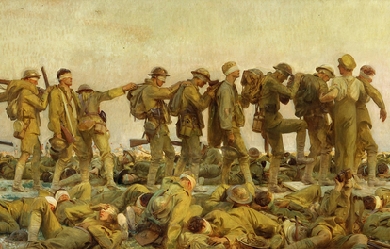

Anthony Evan Hecht (January 16, 1923– October 20, 2004) was an American poet. His work combined a deep interest in form with a passionate desire to confront the horrors of 20th century history, with the Second World War, in which he fought, and the Holocaust being recurrent themes in his work. Biography Early years Hecht was born in New York City to German-Jewish parents. He was educated at various schools in the city– he was a classmate of Jack Kerouac at Horace Mann School– but showed no great academic ability, something he would later refer to as “conspicuous.” However, as a freshman English student at Bard College in New York he discovered the works of Stevens, Auden, Eliot, and Dylan Thomas. It was at this point that he decided he would become a poet. Hecht’s parents were not happy at his plans and tried to discourage them, even getting family friend Ted Geisel, better known as Dr. Seuss, to attempt to dissuade him. In 1944, upon completing his final year at Bard, Hecht was drafted into the 97th Infantry Division and was sent to the battlefields in Europe. He saw combat in Germany in the “Ruhr Pocket” and in Cheb in Czechoslovakia. However, his most significant experience occurred on April 23, 1945 when Hecht’s division helped liberate Flossenbürg concentration camp. Hecht was ordered to interview French prisoners in the hope of gathering evidence on the camp’s commanders. Years later, Hecht said of this experience, The place, the suffering, the prisoners’ accounts were beyond comprehension. For years after I would wake shrieking. Career After the war ended, Hecht was sent to Japan, where he became a staff writer with Stars and Stripes. He returned to the US in March 1946 and immediately took advantage of the G.I. bill to study under the poet-critic John Crowe Ransom at Kenyon College, Ohio. Here he came into contact with fellow poets such as Randall Jarrell, Elizabeth Bishop, and Allen Tate. He later received his master’s degree from Columbia University. In 1947 Hecht attended the University of Iowa and taught in the Iowa Writers’ Workshop, together with writer Robie Macauley, with whom Hecht had served during World War II, but, suffering from post-traumatic stress disorder after his war service, gave it up swiftly to enter psychoanalysis. Hecht released his first collection, A Summoning of Stones, in 1954. In this work his mastery of a wide range of poetic forms were clear as was his awareness of the forces of history, which he had seen first hand. Even at this stage Hecht’s poetry was often compared with that of Auden, with whom Hecht had become friends in 1951 during a holiday on the Italian island of Ischia, where Auden spent each summer. In 1993 Hecht published The Hidden Law, a critical reading of Auden’s body of work. During his career Hecht won many fans, and prizes, including the Rome Prize in 1951 and the 1968 Pulitzer Prize for Poetry for his second work The Hard Hours. It was within this volume that Hecht first addressed his own experiences of World War II - memories that had caused him to have a nervous breakdown in 1959. Hecht spent three months in hospital following his breakdown, although he was spared electric shock therapy, unlike Sylvia Plath, whom he had encountered while teaching at Smith College. Hecht’s main source of income was as a teacher of poetry, most notably at the University of Rochester, where he taught from 1967 to 1985. He also spent varying lengths of time teaching at other notable institutions such as Smith, Bard, Harvard, Georgetown, and Yale. Between 1982 and 1984, he held the esteemed position of Poet Laureate Consultant in Poetry to the Library of Congress. Hecht won a number of notable literary awards including: the 1968 Pulitzer Prize for Poetry (for the volume The Hard Hours), the 1983 Bollingen Prize, the 1988 Ruth Lilly Poetry Prize, the 1989 Aiken Taylor Award for Modern American Poetry, the 1997 Wallace Stevens Award, the 1999/2000 Frost Medal, and the Tanning Prize. Hecht died October 20, 2004, at his home in Washington, D. C.; he is buried at the cemetery at Bard College. One month later, on November 17, Hecht was awarded the National Medal of Arts, accepted on his behalf by his wife, Helen Hecht. The Anthony Hecht prize is awarded annually by the Waywiser press. Bibliography * Poetry * A Summoning of Stones (1954) * The Hard Hours (1967) * Millions of Strange Shadows (1977) * The Venetian Vespers (1979) * The Transparent Man (1990) * Flight Among the Tombs (1998) * The Darkness and the Light (2001) * Translations * Aeschylus’s Seven Against Thebes (1973) (with Helen Bacon) * Other Works * Obbligati: Essays in Criticism (1986) * The Hidden Law: The Poetry of W. H. Auden (1993) * On the Laws of the Poetic Art (1995) * Melodies Unheard: Essays on the Mysteries of Poetry (Johns Hopkins University Press) (2003) References Wikipedia—https://en.wikipedia.org/wiki/Anthony_Hecht
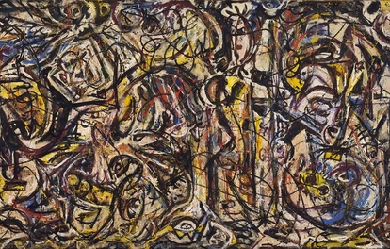
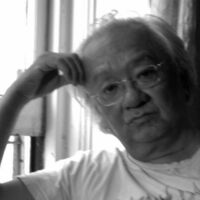
John Yau (born 1950) is an American poet and critic who lives in New York City. He received his B.A. from Bard College in 1972 and his M.F.A. from Brooklyn College in 1978. He has published over 50 books of poetry, artists' books, fiction, and art criticism. According to Matthew Rohrer's profile on Yau from Poets & Writers Magazine, Yau's parents settled in Boston after emigrating from China in 1949. His father was a bookkeeper. Yau characterizes his father as an outsider - "My father was half English and half Chinese [...] so he never fit in." As a child Yau was friends with the son of the Chinese-born abstract painter John Way. By the late 1960s Yau was exposed to, "a lot of anti-war poetry readings in Boston [and] so I'd heard Robert Bly, Denise Levertov, Galway Kinnell, people like that. I don't know - Robert Kelly (poet) just seemed a different kind of poet. Mysterious, in a way. He was interested in the occult, in gnosticism and abstract art - things that had a particular appeal to me." According to Rohrer, Yau's decision to attend Bard College was motivated by his admiration of Kelly. Yau's most recent books are Exhibits (Letter Machine Editions, 2010), A Thing Among Things: The Art of Jasper Johns (Distributed Art Publishers, 2009), and The Passionate Spectator: Essays on Art and Poetry (University of Michigan Press, 2006). His collections of poetry include Paradiso Diaspora (Penguin, 2006), Ing Grish, with Paintings by Thomas Nozkowski (Saturnalia, 2005),Borrowed Love Poems (Penguin, 2002), Forbidden Entries (Black Sparrow, 1996), Berlin Diptychon with Photographs by Bill Barrette (Timken, 1995), Edificio Sayonara (Black Sparrow, 1992),Corpse and Mirror (Holt & Rinehardt, 1983), a National Poetry Series book selected by John Ashbery, and Broken Off by The Music (Burning Deck, 1981). Artists' books include projects with Squeak Carnwath, Richard Tuttle, Norbert Prangenberg, Hanns Schimannsky, Archie Rand, Norman Bluhm, Pat Steir, Suzanne McClelland, Robert Therrien, Leiko Ikemura, and Jürgen Partenheimer (a.o.), his books of art criticism include The United States of Jasper Johns (1996) and In the Realm of Appearances: The Art of Andy Warhol (1993). He has also edited Fetish (1998), a fiction anthology. Yau has been the Arts editor of The Brooklyn Rail since March 2004. He also runs a small press, Black Square Editions, which publishes translations, poetry, and fiction. Yau currently teaches art criticism at Mason Gross School of the Arts, Rutgers University. Awards Yau has received awards and grants from Creative Capital/Warhol Foundation, the Academy of American Poets (Lavan Award), The American Poetry Review (Jerome Shestack Award), the Ingram Merrill Foundation, the National Endowment for the Arts, the New York Foundation for the Arts, the General Electric Foundation, the John Simon Guggenheim Memorial Foundation, and the Foundation for Contemporary Arts. Bibliography * 1983 – Corpse and Mirror (Poems) * 1989 – Radiant Silhouette: Selected Writing 1974-1988 (Poems and prose) * 1992 – Edificio Sayonara (Poems) * 1993 – In the Realm of Appearances: The Art of Andy Warhol (Critique) * 1995 – Berlin Diptychon (Poems) * 1995 – Hawaiian Cowboys (Short stories) * 1996 – Forbidden Entries (Poems) * 1996 – The United States of Jasper Johns (Critique) * 1998 – Fetish (Editor) * 1998 – My Symptoms (Short Stories) * 1999 – In Company: Robert Creeley's Collaborations (Essay) * 2002 – Borrowed Love Poems (Poems) * 2005 - Ing Grish * 2006 - Paradiso Diaspora * 2006 – "andalusia" Authors: John Yau (Poems), Leiko Ikemura, Verlag: Weidle Verlag, ISBN 3-931135-96-9 * 2008 - A Thing Among Things: The Art of Jasper Johns, Distributed Art Publishers, ISBN 1933045620 * 2010 - Exhibits (Poem) * 2012 - Further Adventures in Monochrome (Copper Canyon Press) (Poetry) References Wikipedia – http://en.wikipedia.org/wiki/John_Yau
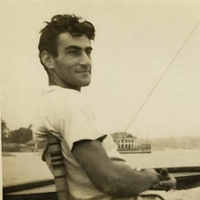
George Oppen (April 24, 1908 – July 7, 1984) was an American poet, best known as one of the members of the Objectivist group of poets. He abandoned poetry in the 1930s for political activism and later moved to Mexico to avoid the attentions of the House Un-American Activities Committee. He returned to poetry—and to the United States—in 1958, and received the Pulitzer Prize in 1969. Early life Oppen was born in New Rochelle, New York, into a Jewish family. His father, a successful diamond merchant, was George August Oppenheimer (b. Apr. 13, 1881), his mother Elsie Rothfeld. His father changed the family name to Oppen in 1927. Oppen’s childhood was one of considerable affluence; the family was well-tended to by servants and maids and Oppen enjoyed all the benefits of a wealthy upbringing: horse riding, expensive automobiles, frequent trips to Europe. But his mother committed suicide when he was four, his father remarried three years later and the boy and his stepmother, Seville Shainwald, apparently could not get along. Oppen developed a skill for sailing at a young age and the seascapes around his childhood home left a mark on his later poetry. He was taught carpentry by the family butler; Oppen, as an adult, found work as a carpenter and cabinetmaker. In 1917, the family moved to San Francisco where Oppen attended Warren Military Academy. It is speculated that during this time Oppen’s early traumas led to fighting and drinking, so that, while reaching maturity, Oppen was also experiencing a personal crisis. By 1925, this period of personal and psychic transition culminated in a serious car wreck in which George was driver and a young passenger was killed. Ultimately, Oppen was expelled from high school just before he graduated. After this period, he traveled to England and Scotland by himself, visiting his stepmother’s relative, and attending lectures by C.A. Mace, professor in philosophy at St. Andrews. In 1926, Oppen started attending Oregon State Agricultural College (what is now Oregon State University). Here he met Mary Colby, a fiercely independent young woman from Grants Pass, Oregon. On their first date, the couple stayed out all night with the result that she was expelled and he suspended. They left Oregon, married, and started hitch-hiking across the country working at odd jobs along the way. Mary documents these events in her memoir, Meaning A Life: An Autobiography (1978). Early writing While living on the road, Oppen began writing poems and publishing in local magazines. In 1929 and 1930 he and Mary spent some time in New York, where they met Louis Zukofsky, Charles Reznikoff, musician Tibor Serly, and designer Russel Wright, among others. In 1929, George came into a small inheritance and relative financial independence. In 1930 George and Mary moved to California and then to France, where, thanks to their financial input, they were able to establish To Publishers and act as printer/publishers with Zukofsky as editor. The short-lived publishing venture managed to launch works by William Carlos Williams and Ezra Pound. Oppen had begun working on poems for what was to be his first book, Discrete Series, a seminal work in early Objectivist history. Some of these appeared in the February 1931 Objectivist issue of Poetry and the subsequent An “Objectivist’s” Anthology published in 1932. Oppen the Objectivist In 1933, the Oppens returned to New York. George Oppen, William Carlos Williams, Louis Zukofsky and Charles Reznikoff set up the Objectivist Press. The press published books by Reznikoff and Williams, as well as Oppen’s first book Discrete Series, which included a preface by Ezra Pound. Politics and war Faced with the effects of the depression and the rise of fascism, the Oppens were becoming increasingly involved in political action. Unable to bring himself to write verse propaganda, Oppen abandoned poetry and joined the Communist Party USA, serving as election campaign manager for Brooklyn in 1936, and helping organize the Utica New York Milk Strike. He and Mary were engaged and active in the cause of worker’s rights, and Oppen was tried and acquitted on a charge of felonious assault on the police. By 1942, Oppen was deferred from military service while working in the defense industry. Disillusioned by the CPUSA and willing to assist in the fight against fascism, Oppen quit his job, making himself eligible for the draft. Effectively volunteering for duty, Oppen saw active service on the Maginot Line and the Ardennes; he was seriously wounded south of the Battle of the Bulge. Shortly after Oppen was wounded, Oppen’s division helped liberate the concentration camp at Landsberg am Lech. He was awarded the Purple Heart and returned to New York in 1945. Mexico After the war, Oppen worked as a carpenter and cabinet maker. Although now less politically active, the Oppens were aware that their pasts were certain to attract the attention of Joseph McCarthy’s Senate committee and decided to move to Mexico. During these admittedly bitter years in Mexico, George ran a small furniture making business and was involved in an expatriate intellectual community. They were also kept under surveillance by the Mexican authorities in association with the Federal Bureau of Investigation. They were able to re-enter the United States in 1958 when the United States government again allowed them to obtain passports which had been revoked since 1950. Return to poetry In 1958, the Oppens considered becoming involved in Mexican real estate if their expatriate status was to continue. But they were contemplating a move back to the United States, which caused both of them considerable anxiety, prompting Mary to see a therapist. During one of her visits, George told the therapist about a dream he was having (the Oppens later referred to this incident as the “rust in copper” dream). The therapist persuaded George that the dream had a hidden meaning that would convince Oppen to begin writing poetry again. But Oppen also suggested other factors led to his return to the US and to poetry, including his daughter’s well-being, because she was beginning college at Sarah Lawrence. After a brief trip in 1958 to visit their daughter at university, the Oppens moved to Brooklyn, New York, in early 1960 (although for awhile, returning to Mexico regularly for visits). Back in Brooklyn, Oppen renewed old ties with Louis Zukofksy and Charles Reznikoff and also befriended many younger poets. The poems came in a flurry; within two years Oppen had assembled enough poems for a book and began publishing the poems in Poetry, where he had first published, and in his half-sister June Oppen Degnan’s San Francisco Review. The poems of Oppen’s first book following his return to poetry, The Materials, were poems that, as he told his sister June, should have been written ten years earlier. Oppen published two more collections of poetry during the 1960s, This In Which (1965) and Of Being Numerous (1968), the latter of which garnered him the Pulitzer Prize in 1969. Last years In 1975, Oppen was able to complete and see into publication his Collected Poems, together with a new section “Myth of the Blaze.” In 1977, Mary provided the secretarial help George needed to complete his final volume of poetry Primitive. During this time, George’s final illness, Alzheimer’s disease, began to manifest itself with confusion, failing memory, and other losses. The disease was eventually to make it impossible for him to continue writing. George Oppen, age 76, died of pneumonia with complications from Alzheimer’s disease in a convalescent home in California on July 7, 1984. Selected bibliography * Discrete Series (1934), with a “Preface” by Ezra Pound * The Materials (1962) * This in Which (1965) * Of Being Numerous (1968) * Alpine (1969) * Seascape: Needle’s Eye (1972) * The Collected Poems (1975) includes Myth of the Blaze * Primitive (1978) * Poems of George Oppen (1990); selected and introduced by Charles Tomlinson * The Selected Letters of George Oppen (2000); edited with an introduction and notes by Rachel Blau DuPlessis * New Collected Poems (2001, revised edition 2008); edited with an introduction and notes by Michael Davidson, w/ a preface by Eliot Weinberger * Selected Poems (2002), edited, with an introduction by Robert Creeley * Selected Prose, Daybooks, and Papers (2008); edited with an introduction by Stephen Cope * Speaking with George Oppen: Interviews with the Poet and Mary Oppen, 1968-1987 (2012), edited with an introduction by Richard Swigg * 21 Poems (2017) Posthumous publications * For more information on Oppen’s posthumous publications, such as his Selected Letters and New Collected Poems, see Wikipedia articles on Rachel Blau DuPlessis and Michael Davidson. Further reading * Oppen, Mary, Meaning A Life: An Autobiography, Santa Barbara, Calif: Black Sparrow Press, 1978. * Hatlen, Burton, ed., George Oppen: Man and Poet (Man/Woman and Poet Series) (Man and Poet Series), National Poetry Foundation, 1981. ISBN 0-915032-53-8 * DuPlessis, Rachel Blau, ed., The Selected Letters of George Oppen, Duke University Press, 1990. * Oppen, George. Selected Prose, Daybooks, and Papers, edited and with an introduction by Stephen Cope. University of California Press, 2007; ISBN 978-0-520-23579-3, paperback: ISBN 978-0-520-25232-5'. * Heller, Michael, Speaking the Estranged: Essays on the Work of George Oppen, Cambridge UK: Salt Publishing, 2008. * Shoemaker, Steven, ed., Thinking Poetics: Essays on George Oppen, Tuscaloosa, Alabama: University of Alabama Press, 2009. * Swigg, Richard, ed.,Speaking with George Oppen: Interviews with the Poet and Mary Oppen, 1968-1987, Jefferson, North Carolina and London, McFarland & Company, 2012. ISBN 978-0-786-46-7884 * Swigg, Richard, George Oppen: The Words in Action, Lewisburg, Bucknell University Press, 2016. ISBN 978-1-61148-749-7 References Wikipedia—https://en.wikipedia.org/wiki/George_Oppen

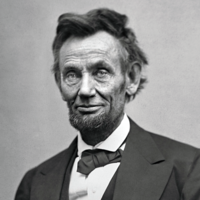
Abraham Lincoln (February 12, 1809– April 15, 1865) was the 16th President of the United States, serving from March 1861 until his assassination in April 1865. Lincoln led the United States through its Civil War—its bloodiest war and an event often considered its greatest moral, constitutional, and political crisis. In doing so, he preserved the Union, abolished slavery, strengthened the federal government, and modernized the economy. Born in Hodgenville, Kentucky, Lincoln grew up on the western frontier in Kentucky and Indiana. Largely self-educated, he became a lawyer in Illinois, a Whig Party leader, and a member of the Illinois House of Representatives, in which he served for twelve years.
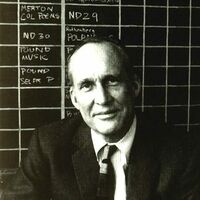
James Laughlin (October 30, 1914 – November 12, 1997) was an American poet and literary book publisher who founded New Directions Publishing. He was born in Pittsburgh, the son of Henry Hughart and Marjory Rea Laughlin. Laughlin's family had made its fortune with the Jones and Laughlin Steel Company, founded three generations earlier by his great grandfather, James H. Laughlin, and this wealth would partially fund Laughlin's future endeavors in publishing. As Laughlin once wrote, "none of this would have been possible without the industry of my ancestors, the canny Irishmen who immigrated in 1824 from County Down to Pittsburgh, where they built up what became the fourth largest steel company in the country. I bless them with every breath." Laughlin's boyhood home is now part of the campus of Chatham University. At The Choate School (now Choate Rosemary Hall) in Wallingford, Connecticut, Laughlin showed an early interest in literature. An important influence on Laughlin at the time was the Choate teacher and translator Dudley Fitts, who later provided Laughlin with introductions to prominent writers such as Gertrude Stein and Ezra Pound. Harvard University, where Laughlin matriculated in 1933, had a more conservative literary bent, embodied in the poet and professor Robert Hillyer, who directed the writing program. According to Laughlin, Hillyer would leave the room when either Pound or Eliot was mentioned. In 1934, Laughlin traveled to France, where he met Gertrude Stein and Alice B. Toklas. Laughlin accompanied the two on a motoring tour of southern France and wrote press releases for Stein's upcoming visit to the U.S. He proceeded to Italy to meet and study with Ezra Pound, who famously told him, "You're never going to be any good as a poet. Why don't you take up something useful?" Pound suggested publishing. Later, Laughlin took a leave of absence from Harvard and stayed with Pound in Rapallo for several months. When Laughlin returned to Harvard, he used money from his father to found New Directions, which he ran first from his dorm room and later from a barn on his Aunt Leila Laughlin Carlisle's estate in Norfolk, Connecticut. (The firm opened offices in New York soon after, first at 333 Sixth Avenue and later at 80 Eighth Avenue, where it remains today.) With funds from his graduation gift, Laughlin endowed New Directions with more money, ensuring that the company could stay afloat even though it did not turn a profit until 1946. The first publication of the new press, in 1936, was New Directions in Prose & Poetry, an anthology of poetry and writings by authors such as William Carlos Williams, Ezra Pound, Elizabeth Bishop, Henry Miller, Marianne Moore, Wallace Stevens, and E. E. Cummings, a roster that heralded the fledgling company's future as a preeminent publisher of modernist literature. The volume also included a poem by "Tasilo Ribischka," a pseudonym for Laughlin himself. New Directions in Prose and Poetry became an annual publication, issuing its final number in 1991. Within just a few years New Directions had become an important publisher of modernist literature. Initially, it emphasized contemporary American writers with whom Laughlin had personal connections, such as William Carlos Williams and Pound. A born cosmopolitan, though, Laughlin also sought out cutting-edge European and Latin American authors and introduced their work to the American market. One important example of this was Hermann Hesse's novel Siddhartha, which New Directions initially published in 1951. Laughlin often remarked that the popularity of Siddhartha subsidized the publication of many other money-losing books of greater importance. Although of draft age, Laughlin avoided service in World War II due to a 4-F classification. Laughlin, like several of his male ancestors and like his son Robert, suffered from depression. Robert committed suicide in 1986 by stabbing himself multiple times in the bathtub. Laughlin later wrote a poem about this, called Experience of Blood, in which he expresses his shock at the amount of blood in the human body. Despite the horrific mess left as a result, Laughlin reasons that he cannot ask anyone else to clean it up, "because after all, it was my blood too." A natural athlete and an avid skier, Laughlin traveled the world skiing and hiking. With money from his graduation gift, he founded the Alta Ski Area in Utah and was part-owner of the resort there for many years. Laughlin also spearheaded the surveying of the Albion-Sugarloaf ski area, along with Alta notables Chic Morton, Alf Engen, and fellow Ski Enthusiast and Painter Ruth Rogers-Altmann. At times Laughlin's skiing got in the way of his business. After publishing William Carlos Williams' novel White Mule in 1937, Laughlin left for an extended ski trip. When reviewers sought additional copies of the novel, Laughlin was not available to give the book the push it could have used, and as a result Williams nursed a grudge against the young publisher for years. Laughlin's outdoor activities helped other literary friendships, though; for many years he and Kenneth Rexroth took an annual camping trip together in the Sierra Nevada mountains of California. In the 1960s, Laughlin published Rexroth's friend, the poet and essayist Gary Snyder, also an avid outdoorsman. In the early 1950s, Laughlin took part in what has come to be known as the Cultural Cold War against the Soviet Union. With funding from the Ford Foundation and with the assistance of poet and editor Hayden Carruth, Laughlin founded a nonprofit called "Intercultural Publications" that sought to publish a quarterly journal of American arts and letters, PERSPECTIVES USA, in Europe. Sixteen issues of the journal eventually appeared. Although Laughlin wished to continue the journal, the Ford Foundation cut off funding, asserting that PERSPECTIVES had limited impact and that its money would be better spent on the more effective Congress for Cultural Freedom. Following the dissolution of Intercultural Publications, Laughlin became deeply involved in the activities of the Asia Society. Pound's advice to Laughlin to give up poetry didn't stick. He published his first book of poetry, SOME NATURAL THINGS, in 1945, and continued to write verse until his death. Although he never enjoyed the acclaim that the writers he published received, Laughlin's verse (which is plainspoken and focused on everyday experience, reminiscent of Williams or even the Roman poet Catullus) was well-respected by other poets, and in the 1990s the NEW YORKER published six of his poems. Among his books are IN ANOTHER COUNTRY, THE COUNTRY ROAD, and the posthumous autobiographical poem BYWAYS. Laughlin won the 1992 Distinguished Contribution to American Letters Award from the National Book Awards Program. The Academy of American Poets' James Laughlin award, for a poet's second book, is named in his honor. He died of complications related to a stroke in Norfolk, Connecticut, at age 83. Works Laughlin's works include: * In Another Country (1979) * Selected Poems (1986) * The House of Light (1986) * Tabellae (1986) * The Owl of Minerva (Copper Canyon Press, 1987) * Collemata and Pound As Wuz (1988) * The Bird of Endless Time (Copper Canyon Press, 1989) * Collected Poems of James Laughlin (1992) * Angelica (1992) * The Man in the Wall (1993) * The Country Road (1995) * The Secret Room (1997) * A Commonplace Book of Pentastichs (1998) * Byways: A Memoir (2005) * The Way It Wasn't: From the Files of James Laughlin (2006) * Laughlin's correspondence with William Carlos Williams, Henry Miller, Thomas Merton, Delmore Schwartz, Ezra Pound, and others has been published in a series of volumes issued by Norton. References Wikipedia—http://en.wikipedia.org/wiki/James_Laughlin
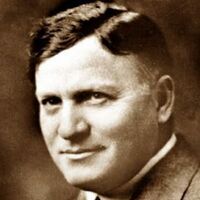
Max Ehrmann (September 26, 1872 – September 9, 1945) was an American writer, poet, and attorney from Terre Haute, Indiana, widely known for his 1927 prose poem "Desiderata" (Latin: "things desired"). He often wrote on spiritual themes. Education Ehrmann was of German descent; both his parents emigrated from Bavaria in the 1840s. Young Ehrmann was educated at the Terre Haute Fourth District School and the German Methodist Church. He received a degree in English from DePauw University in Greencastle, Indiana, which he attended from 1890 to 1894. While there, he was a member of Delta Tau Delta's Beta Beta chapter and was editor of the school newspaper, Depauw Weekly. Ehrmann then studied philosophy and law at Harvard University, where he was editor of Delta Tau Delta's national magazine The Rainbow, circa 1896. Professional life Ehrmann returned to his hometown of Terre Haute, Indiana in 1898 to practice law. He was a deputy state's attorney in Vigo County, Indiana for two years. Subsequently, he worked in his family's meatpacking business and in the overalls manufacturing industry (Ehrmann Manufacturing Co.) At age 40, Ehrmann left the business to write. At age 54, he wrote Desiderata, which achieved fame only after his death. Legacy Ehrmann was awarded Doctor of Letters honorary degree from DePauw University in about 1937. He was also elected to the Delta Tau Delta Distinguished Service Chapter, the fraternity's highest alumni award. Ehrmann died in 1945. He is buried in Highland Lawn Cemetery in Terre Haute, Indiana. In 2010 the city honored Ehrmann with a life-size bronze statue by sculptor Bill Wolfe. He is depicted sitting on a downtown bench, pen in hand, with a notebook in his lap. "Desiderata" is engraved on a plaque that resides next to the statue and lines from the poem are embedded in the walkway. The sculpture is in the collection of Art Spaces, Inc. – Wabash Valley Outdoor Sculpture Collection. Art Spaces also holds an annual Max Ehrmann Poetry Competition. References Wikipedia – http://en.wikipedia.org/wiki/Max_Ehrmann
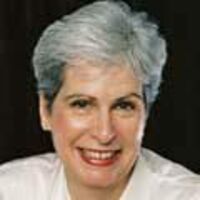
Mary Elizabeth Frye (November 13, 1905 – September 15, 2004) was an American housewife and florist, best known as the author of the poem “Do not stand at my grave and weep”, written in 1932. She was born in Dayton, Ohio, and was orphaned at the age of three. She moved to Baltimore, Maryland, when she was twelve. She was an avid reader with a remarkable memory. In 1927 she married Claud Frye, who ran a clothing business, while she grew and sold flowers. The poem for which she became famous was originally composed on a brown paper shopping bag, and was reportedly inspired by the story of a young Jewish girl, Margaret Schwarzkopf, who had been staying with the Frye household and had been unable to visit her dying mother in Germany because of anti-Semitic unrest. Because people liked her twelve-line, untitled verse, Frye made many copies and circulated them privately. She never published or copyrighted the poem. The identity of the author of the poem was unknown until the late 1990s, when Frye revealed that she had written it. Her claim was confirmed in 1998 after research by Abigail Van Buren.
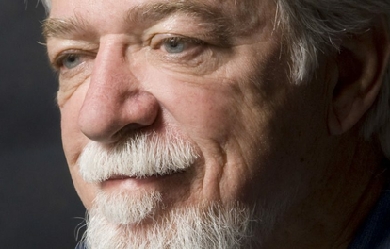
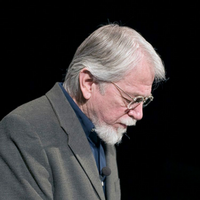
B.H. Fairchild (born 1942) is an American poet and former college professor. His most recent book is Usher (W.W. Norton, 2009), and his poems have appeared in literary journals and magazines including The New Yorker, The Paris Review, The Southern Review, Poetry, TriQuarterly, The Hudson Review, Salmagundi, The Sewanee Review. His third poetry collection, The Art of the Lathe, winner of the 1997 Beatrice Hawley Award (Alice James Books, 1998), brought Fairchild’s work to national prominence, garnering him a large number of awards and fellowships including the William Carlos Williams Award, Kingsley Tufts Poetry Award, California Book Award, Natalie Ornish Poetry Award, PEN Center USA West Poetry Award, National Book Award (finalist), Capricorn Poetry Award, and Rockefeller and Guggenheim fellowships. The book ultimately gave him international prominence, as The Way Weiser Press in England published the U.K. edition of the book. The Los Angeles Times wrote that “The Art of the Lathe by B.H. Fairchild has become a contemporary classic—a passionate example of the plain style, so finely crafted and perfectly pitched... workhorse narratives suffused with tenderness and elegiac music.” Fairchild has written that a fellowship from the National Endowment for the Arts was vital to his career as a poet: "It’s very simple: without an NEA Fellowship in 1989-90, I would not have been able to complete my second book, Local Knowledge, nor have had the necessary time to compose the core poems for The Art of the Lathe, my third book, which, I am proud to say, received the Kingsley Tufts Award and was a finalist for the National Book Award, thus bringing my work to a wider audience than the immediate members of my family and also, therefore, making future work possible.” He was born in Houston, Texas, and grew up in small towns in the oil fields of Oklahoma, Texas, and Kansas, later working through high school and college for his father, a lathe machinist. He taught English and Creative Writing at California State University, San Bernardino and Claremont Graduate University. He lives in Claremont, California with his wife, Patti, and dog, Minnie. As of 2011, it has been announced that Fairchild will teach at The University of North Texas. Books * Full-Length Poetry Collections * The Blue Buick: New and Selected Poems (W. W. Norton, 2014) * Usher (W. W. Norton, 2009) * Local Knowledge (W. W. Norton, 2005, second edition) * Early Occult Memory Systems of the Lower Midwest (W. W. Norton, 2003) * The Arrival of the Future (Alice James Books, 2000, second edition) * The Art of the Lathe (Alice James Books, 1998) * Local Knowledge (Quarterly Review of Literature, Princeton, NJ, 1991) * The Arrival of the Future (illustrated by Ross Zirkle, Swallow’s Tale Press, 1985; Livingston Publishing, 1985) * Chapbooks * The System of Which the Body Is One Part (State Street Press, 1988) * Flight (Devil’s Millhopper Press, 1985) * C & W Machine Works (Trilobite Press, 1983) * Special Editions * Trilogy, with an introduction by Paul Mariani and engravings by Barry Moser. (Pennyroyal Press, 2008) * Literary Criticism * Such Holy Song: Music as Idea, Form, and Image in the Poetry of William Blake (Kent State University Press, 1980) Honors and awards * 2015 The Paterson Poetry Prize * 2015 The Blue Buick, one of two books of poetry chosen for the RUSA/ALA Notable Books List * 2014 John William Corrington Award for Literary Excellence from Centenary College * 2014 Pushcart Prize in Poetry for “The Story” * 2011 Pushcart Prize in the Essay for “Logophilia” * 2010 Best of the Net Award for “The Student Assistant” * 2009 Pushcart Prize in Poetry for “Frieda Pushnik” * 2007 University of Kansas Distinguished Achievement Award * 2005 Lannan Foundation Residency in Marfa, Texas * 2005 Gold Medal in Poetry, California Book Awards * 2005 Aiken Taylor Award for Modern American Poetry * 2005 National Endowment for the Arts - Literature Fellowship in Poetry * 2004 Bobbitt National Prize for Poetry * 2002 Arthur Rense Poetry Prize, from the American Academy of Arts and Letters * 2002 National Book Critics Circle Award, for Early Occult Memory Systems of the Lower Midwest * 2001 The Frost Place poet in residence * 2000 Rockefeller Fellowship * 1999 Guggenheim Fellowship * 1999 William Carlos Williams Award * 1999 Kingsley Tufts Poetry Award * 1999 California Book Award * 1999 Natalie Ornish Poetry Award * 1999 PEN Center USA West Poetry Award * 1998 Finalist, National Book Award * 1997 Beatrice Hawley Award * 1996 Capricorn Poetry Award * 1988 National Endowment for the Arts - Literature Fellowship in Poetry * Walter E. Dakin Fellowship to the Sewanee Writers Conference * National Writers’ Union First Prize * AWP Anniversary Award References Wikipedia—https://en.wikipedia.org/wiki/B._H._Fairchild
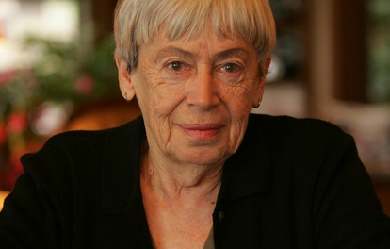
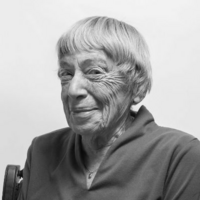
Ursula Kroeber Le Guin (October 21, 1929 – January 22, 2018) was an American novelist. She worked mainly in the genres of fantasy and science fiction. She also authored children’s books, short stories, poetry, and essays. Her writing was first published in the 1960s and often depicted futuristic or imaginary alternative worlds in politics, the natural environment, gender, religion, sexuality, and ethnography. In 2016, The New York Times described her as “America’s greatest living science fiction writer”, although she said that she would prefer to be known as an “American novelist”. She influenced Booker Prize winners and other writers, such as Salman Rushdie and David Mitchell, and science fiction and fantasy writers including Neil Gaiman and Iain Banks. She won the Hugo Award, Nebula Award, Locus Award, and World Fantasy Award, each more than once. In 2014, she was awarded the National Book Foundation Medal for Distinguished Contribution to American Letters. In 2003, she was made a Grandmaster of Science Fiction, one of a few women writers to take the top honor in the genre. Life Birth and family Ursula Kroeber was the daughter of anthropologist Alfred Louis Kroeber of the University of California, Berkeley, and writer Theodora Kracaw. Childhood and education Ursula and her three older brothers, Clifton, Theodore, and Karl Kroeber, were encouraged to read and were exposed to their parents’ dynamic friend group, which included Native Americans and Robert Oppenheimer, who was later to become in part a model for her hero in The Dispossessed. Le Guin stated that, in retrospect, she was grateful for the ease and happiness of her upbringing. The encouraging environment fostered Le Guin’s interest in literature; her first fantasy story was written at age 9, her first science fiction story submitted for publication in the magazine Astounding Science Fiction at age 11. The family spent the academic year in Berkeley, retreating in the summers to “Kishamish” in Napa Valley, "an old, tumble-down ranch... [and] a gathering place for scientists, writers, students, and California Indians. Even though I didn’t pay much attention, I heard a lot of interesting, grown-up conversation." She was interested in biology and poetry, but found math difficult. Le Guin attended Berkeley High School. She received her B.A. (Phi Beta Kappa) in Renaissance French and Italian literature from Radcliffe College in 1951, and M.A. in French and Italian literature from Columbia University in 1952. Soon after, Le Guin began her Ph.D. work and won a Fulbright grant to continue her studies in France from 1953 to 1954. Marriage and family In 1953, while traveling to France aboard the Queen Mary, Le Guin met her future husband, historian Charles Le Guin. They married later that year in Paris. After marrying, Le Guin chose not to continue her doctoral studies of the poet Jean Lemaire de Belges. The couple returned to the United States so that he could pursue his Ph.D. at Emory University. During this time, she worked as a secretary and taught French at the university level. Their first child, Elisabeth (1957), was born in Moscow, Idaho, where Charles taught. In 1958 the Le Guins moved to Portland, Oregon, where their daughter Caroline (1959) was born, and where they lived thereafter. Charles is Emeritus Professor of History at Portland State University. During this time, she continued to make time for writing in addition to maintaining her family life. In 1964, her third child, Theodore, was born. Death Le Guin died on January 22, 2018, at her home in Portland, Oregon; her son stated that she had been in poor health for several months. Her New York Times obituary called her “the immensely popular author who brought literary depth and a tough-minded feminist sensibility to science fiction and fantasy with books like The Left Hand of Darkness and the Earthsea series”. Writing career Le Guin became interested in literature quite early. At age 11, she submitted her first story to the magazine Astounding Science Fiction. Despite being rejected, she continued writing but did not attempt to publish for the next ten years. From 1951 to 1961 she wrote five novels, which publishers rejected, because they seemed inaccessible. She also wrote poetry during this time, including Wild Angels (1975). Her earliest writings, some of which she adapted in Orsinian Tales and Malafrena, were non-fantastic stories set in the imaginary country of Orsinia. Searching for a way to express her interests, she returned to her early interest in science fiction; in the early 1960s her work began to be published regularly. One Orsinian Tale was published in the Summer 1961 issue of The Western Humanities Review and three of her stories appeared in 1962 and 1963 numbers of Fantastic Stories of Imagination, a monthly edited by Cele Goldsmith. Goldsmith also edited Amazing Stories, which ran two of Le Guin’s stories in 1964, including the first “Hainish” story. In 1964 the short story “The Word of Unbinding” was published. This was the first of the Earthsea fantasy series, which includes six books and eight short stories. The three linked young adult novels beginning with A Wizard of Earthsea (1968), The Tombs of Atuan (1970), and The Farthest Shore (1972), sometimes referred to as The Earthsea Trilogy, in later years would be joined by the books Tehanu, Tales from Earthsea and The Other Wind. Le Guin received wide recognition for her novel The Left Hand of Darkness, which won the Hugo and Nebula awards in 1970. Her subsequent novel The Dispossessed made her the first person to win both the Hugo and Nebula Awards for Best Novel twice for the same two books. In later years, Le Guin worked in film and audio. She contributed to The Lathe of Heaven, a 1979 PBS film based on her novel of the same name. In 1985 she collaborated with avant-garde composer David Bedford on the libretto of Rigel 9, a space opera. In May 1983 she delivered a well-received commencement address entitled “A Left-Handed Commencement Address” at Mills College, Oakland, California. “A Left-Handed Commencement Address” is included in her nonfiction collection Dancing at the Edge of the World. In 1984, Le Guin was part of a group along with Ken Kesey, Brian Booth, and William Stafford that founded the Oregon Institute of Literary Arts, which is now known as Literary Arts in Portland. In December 2009, Le Guin resigned from the Authors Guild in protest over its endorsement of Google Books, Google’s book digitization project. “You decided to deal with the devil”, she wrote in her resignation letter. “There are principles involved, above all the whole concept of copyright; and these you have seen fit to abandon to a corporation, on their terms, without a struggle.” (See Authors Guild, Inc. v. Google, Inc..) Influences Le Guin was influenced by fantasy writers, including J. R. R. Tolkien, by science fiction writers, including Philip K. Dick (who was in her high school class, though they did not know each other), by central figures of Western literature such as Leo Tolstoy, Virgil and the Brontë sisters, by feminist writers such as Virginia Woolf, by children’s literature such as Alice in Wonderland, The Wind in the Willows, The Jungle Book, by Norse mythology, and by books from the Eastern tradition such as the Tao Te Ching. When asked about her influences, she replied: Once I learned to read, I read everything. I read all the famous fantasies – Alice in Wonderland, and Wind in the Willows, and Kipling. I adored Kipling’s Jungle Book. And then when I got older I found Lord Dunsany. He opened up a whole new world – the world of pure fantasy. And... Worm Ouroboros. Again, pure fantasy. Very, very fattening. And then my brother and I blundered into science fiction when I was 11 or 12. Early Asimov, things like that. But that didn’t have too much effect on me. It wasn’t until I came back to science fiction and discovered Sturgeon – but particularly Cordwainer Smith.... I read the story “Alpha Ralpha Boulevard”, and it just made me go, “Wow! This stuff is so beautiful, and so strange, and I want to do something like that.” In the mid-1950s, she read J. R. R. Tolkien’s The Lord of the Rings, which had an enormous impact on her. But rather than making her want to follow in Tolkien’s footsteps, it simply showed her what was possible with the fantasy genre. Themes Le Guin exploits the creative flexibility of the science fiction and fantasy genres to undertake thorough explorations of dimensions of both social and psychological identity and of broader cultural and social structures. In doing so, she draws on sociology, anthropology, and psychology, leading some critics to categorize her work as soft science fiction. She objected to this classification of her writing, arguing the term is divisive and implies a narrow view of what constitutes valid science fiction. Underlying ideas of anarchism and environmentalism also make repeated appearances throughout Le Guin’s work. In 2014 Le Guin said about the appeal of contemplating possible futures in science fiction: anything at all can be said to happen [in the future] without fear of contradiction from a native. The future is a safe, sterile laboratory for trying out ideas in, a means of thinking about reality, a method. Sociology, anthropology and psychology Being so thoroughly informed by social science perspectives on identity and society, Le Guin treats race and gender quite deliberately. The majority of her main characters are people of color, a choice made to reflect the non-white majority of humans, and one to which she attributes the frequent lack of character illustrations on her book covers. Her writing often makes use of alien (i.e., human but non-Terran) cultures to examine structural characteristics of human culture and society and their impact on the individual. This prominent theme of cultural interaction is most likely rooted in the fact that Le Guin grew up in a household of anthropologists where she was surrounded by the remarkable case of Ishi – a Native American acclaimed in his time as the “last wild Indian” – and his interaction with the white man’s world. Le Guin’s father was director of the University of California Museum of Anthropology, where Ishi was studied and worked as a research assistant. Her mother wrote the bestseller Ishi in Two Worlds. Similar elements are echoed through many of Le Guin’s stories – from Planet of Exile and City of Illusions to The Word for World Is Forest and The Dispossessed. Le Guin’s writing notably employs the ordinary actions and transactions of everyday life, clarifying how these daily activities embed individuals in a context of relation to the physical world and to one another. For example, the engagement of the main characters with the everyday business of looking after animals, tending gardens and doing domestic chores is central to the novel Tehanu. Themes of Jungian psychology also are prominent in her writing. For example Le Guin’s Hainish Cycle, a series of novels encompassing a loose collection of societies, of various related human species, that exist largely in isolation from one another, providing the setting for her explorations of intercultural encounter. The Left Hand of Darkness, The Dispossessed and The Telling all consider the consequences of contact between different worlds and cultures. Unlike those in much mainstream science fiction, Hainish Cycle civilization does not possess reliable human faster-than-light travel, but does have technology for instantaneous communication. The social and cultural impact of the arrival of Ekumen envoys (known as “mobiles”) on remote planets, and the culture shock that the envoys experience, constitute major themes of The Left Hand of Darkness. Le Guin’s concept has been borrowed explicitly by several other well-known authors, to the extent of using the name of the communication device (the “ansible”). The Left Hand of Darkness is particularly noted for the way she explores social, cultural, and personal consequences of sexual identity through a novel involving a human’s encounter with an intermittently androgynous race. In addition to androgyny, Le Guin’s focus on sexuality breaks down normative gender roles. “Solitude”, one of the stories in The Birthday of the World: and Other Stories follows a young girl, more adventurous and daring than her older brother, into a world dominated by strong, territorial women. In Paradises Lost, the people of a spaceship several generations into the voyage to a new colony-world are saved by a female interstellar navigator, an archetypal role typically reserved for men. Environmentalism Elizabeth McDowell states in her 1992 master’s thesis that Le Guin "identif[ies] the present dominant socio-political American system as problematic and destructive to the health and life of the natural world, humanity, and their interrelations". This idea recurs in several of Le Guin’s works, most notably The Left Hand of Darkness (1969), The Word for World Is Forest (1972), The Dispossessed (1974), The Eye of the Heron (1978), Always Coming Home (1985), and “Buffalo Gals, Won’t You Come Out Tonight” (1987). All of these works center on ideas regarding socio-political organization and value-system experiments in both utopias and dystopias. As McDowell explains, “Although many of Le Guin’s works are exercises in the fantastic imagination, they are equally exercises of the political imagination.” In addition to her fiction, Le Guin’s book Out Here: Poems and Images from Steens Mountain Country, a collaboration with artist Roger Dorband, is a clear environmental testament to the natural beauty of that area of Eastern Oregon. Le Guin also wrote several works of poetry and nonfiction on Mount St. Helens following the 1980 eruption. These works explore local stories and discussions surrounding the eruption event in conjunction with Le Guin’s own perspective as it relates to viewing the eruption and mountain from her home in Portland, as well as her various visits into the blast zone. Anarchism and Taoism Le Guin’s feelings towards anarchism were closely tied to her Taoist beliefs and both ideas appear in her work. “Taoism and Anarchism fit together in some very interesting ways and I’ve been a Taoist ever since I learned what it was.” She participated in numerous peace marches and although she did not call herself an anarchist, since she did not live the lifestyle, she did feel that “Democracy is good but it isn’t the only way to achieve justice and a fair share.” Le Guin said: “The Dispossessed is an Anarchist utopian novel. Its ideas come from the Pacifist Anarchist tradition – Kropotkin etc. So did some of the ideas of the so-called counterculture of the sixties and seventies.” She also said that anarchism “is a necessary ideal at the very least. It is an ideal without which we couldn’t go on. If you are asking me is anarchism at this point a practical movement, well, then you get in the question of where you try to do it and who’s living on your boundary?” Le Guin has been credited with helping to popularize anarchism as her work "rescues anarchism from the cultural ghetto to which it has been consigned [and] introduces the anarchist vision... into the mainstream of intellectual discourse". Indeed her works were influential in developing a new anarchist way of thinking; a postmodern way that is more adaptable and looks at/addresses a broader range of concerns. Adaptations of her work Few of Le Guin’s major works have been adapted for film or television. Her 1971 novel The Lathe of Heaven has been adapted twice: The first adaptation was made in 1979 by WNET Channel 13 in New York, with her own participation, and the second adaptation was made in 2002 by the A&E Network. In a 2008 interview, she said she considers the 1979 adaptation as “the only good adaptation to film” of her work to date. In the early 1980s animator and director Hayao Miyazaki asked permission to create an animated adaptation of Earthsea. However, Le Guin, who was unfamiliar with his work and anime in general, turned down the offer. Years later, after seeing My Neighbor Totoro, she reconsidered her refusal, believing that if anyone should be allowed to direct an Earthsea film, it should be Hayao Miyazaki. The third and fourth Earthsea books were used as the basis of the 2006 animated film Tales from Earthsea (ゲド戦記, Gedo Senki). The film, however, was directed by Miyazaki’s son, Gorō, rather than Hayao Miyazaki himself, which disappointed Le Guin. While she was positive about the aesthetic of the film, writing that “much of it was beautiful”, she took great issue with its re-imagining of the moral sense of the books and greater focus on physical violence. "[E]vil has been comfortably externalized in a villain", Le Guin writes, "the wizard Kumo/Cob, who can simply be killed, thus solving all problems. In modern fantasy (literary or governmental), killing people is the usual solution to the so-called war between good and evil. My books are not conceived in terms of such a war, and offer no simple answers to simplistic questions.” In 1987, the CBC Radio anthology program Vanishing Point adapted The Dispossessed into a series of six 30-minute episodes, and at an unspecified date The Word for World Is Forest as a series of three 30-minute episodes. In 1995, Chicago’s Lifeline Theatre presented its adaptation of The Left Hand of Darkness. Reviewer Jack Helbig at the Chicago Reader wrote that the “adaptation is intelligent and well crafted but ultimately unsatisfying”, in large measure because it is extremely difficult to compress a complex 300-page novel into a two-hour stage presentation. In 2004 the Sci Fi Channel adapted the first two books of the Earthsea trilogy as the miniseries Legend of Earthsea. Le Guin was highly critical of the adaptation, calling it a “far cry from the Earthsea I envisioned”, objecting both to the use of white actors for her red, brown, or black-skinned characters, and to the way she was “cut out of the process”. Her novella, Paradises Lost, published in The Birthday of the World: and Other Stories, was adapted into an opera by the American composer Stephen Andrew Taylor and Canadian librettist Marcia Johnson. The opera premiered April 26, 2012 at the Krannert Center for the Performing Arts on the campus of the University of Illinois. In 2013, the Portland Playhouse and Hand2Mouth Theatre produced a stage adaptation of The Left Hand of Darkness, directed and adapted by Jonathan Walters, with text adapted by John Schmor. The play opened May 2, 2013, and ran until June 16, 2013, in Portland, Oregon. In 2015, the BBC commissioned radio adaptations of The Left Hand of Darkness and the first three Earthsea novels. The Left Hand of Darkness was aired as two hour-long episodes, and Earthsea as six half-hour episodes. In early 2017 Le Guin’s award winning novel The Left Hand of Darkness was picked up by Critical Content, a production company formerly known as Relativity Television, to be produced as a television limited series. Le Guin was to serve as a consulting producer on the project.
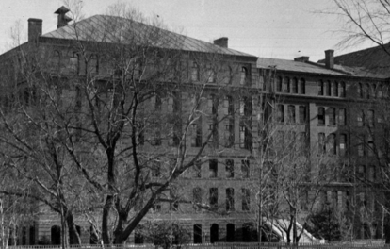
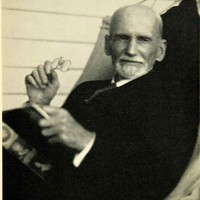
Gamaliel Bradford (October 9, 1863– April 11, 1932) was an American biographer, critic, poet, and dramatist. Born in Boston, Massachusetts, the sixth of seven men called Gamaliel Bradford in unbroken succession, of whom the first, Gamaliel Bradford, was a great-grandson of Governor William Bradford of the Plymouth Colony. Bradford attended Harvard University briefly with the class of 1886, then continued his education with a private tutor, but is said to have been educated “mainly by ill-health and a vagrant imagination.” As an adult, Bradford lived in Wellesley, Massachusetts. The building and student newspaper for the Wellesley High School (where Sylvia Plath received her secondary school education) were named after Gamaliel Bradford. The town changed the name of the building to Wellesley High School, but the newspaper maintains Bradford’s name. In his day Bradford was regarded as the “Dean of American Biographers.” He is acknowledged as the American pioneer of the psychographic form of written biographies, after the style developed by Lytton Strachey. Despite suffering poor health during most of his life, Bradford wrote 114 biographies over a period of 20 years. Bibliography * A Pageant of Life (poetry) * A Prophet of Joy (poetry) * Shadow Verses (poetry) * Unmade in Heaven (drama) * Lee, the American * American Portraits, 1875-1900 * Union Portraits * Confederate Portraits, 1914. * Portraits of Women * Portraits of American Women * Saints and Sinners * A Naturalist of Souls: Studies in Psychography * Life and I (autobiography) * Elizabethan Women, 1936. Articles * “Government in the United States,” The Contemporary Review, Vol. XLVIII, July/December 1885. * “Municipal Government,” Scribners, October 1887. * “Journalism and Permanence,” The North American Review, August 1915. * “A Confederate Pepys,” The American Mercury, December 1925. References Wikipedia—https://en.wikipedia.org/wiki/Gamaliel_Bradford_(biographer)
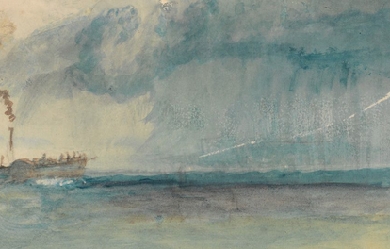
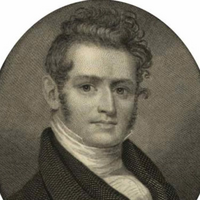
Joseph Rodman Drake (August 7, 1795– September 21, 1820) was an early American poet. Biography Born in New York City, he was orphaned when young and entered a mercantile house. While still a child, he showed a talent for writing poems. He was educated at Columbia College. In 1813 he began studying in a physician’s office. In 1816 he began to practice medicine and in the same year married Sarah, daughter of Henry Eckford, a naval architect. In 1819, together with his friend and fellow poet Fitz-Greene Halleck, he wrote a series of satirical verses for the New York Evening Post, which were published under the penname “The Croakers.” Drake died of consumption a year later at the age of twenty-five. As a writer, Drake is considered part of the “Knickerbocker group”, which also included Halleck, Washington Irving, William Cullen Bryant, James Kirke Paulding, Gulian Crommelin Verplanck, Robert Charles Sands, Lydia M. Child, and Nathaniel Parker Willis. A collection, The Culprit Fay and Other Poems, was published posthumously by his daughter in 1835. His best-known poems are the long title-poem of that collection, and the patriotic “The American Flag” which was set as a cantata for two soloists, choir and orchestra by the Czech composer Antonín Dvořák in 1892-93. “The Culprit Fay” served as the inspiration for a 1908 orchestral rhapsody of the same name by Henry Kimball Hadley. Fitz-Greene Halleck’s poem “Green be the turf above thee” was written as a memorial to Drake. Joseph Rodman Drake Park in Hunts Point, Bronx, was named for him in 1915. This park has received $180,000 of New York State funding to memorialize slave workers likely to be buried there. Critical response In the early 19th century Americans numbered Drake and his friend Halleck as a two of the leading literary personalities and talents produced by their country, but their reputations were short-lived. In April 1836, Edgar Allan Poe published a review of their work–known to Poe scholars as “The Dake-Halleck Review”– in the Southern Literary Messenger criticized both, though he thought Drake the better of the two. Poe’s essay is as much a critique of the state of criticism at that time, objecting to the factthat “at this particular moment there are no American poems held in so high estimation by our countrymen, as the poems of Drake, and of Halleck.” Looking at Drake’s The Culprit Fay, a narrative poem of 640 lines, Poe found elements to praise but wrote that “the greater part of it is utterly destitute of any evidence of imagination whatever”. He found Drake capable of description, but offered his view that description required little poetic ability and provided his own alternatives to show how simple this writing was. For Drakes’ lines: Poe offered: In Poe’s view this ability creates “a species of vague wonder at the writer’s ingenuity” in most readers, but Poe mocked it as an example of the “sublimely ridiculous” and “puerilities”, requiring the reader to “imagine a race of Fairies in the vicinity of West Point”. Works * The American Flag * The Culprit Fay: and Other Poems (1835) References Wikipedia—https://en.wikipedia.org/wiki/Joseph_Rodman_Drake
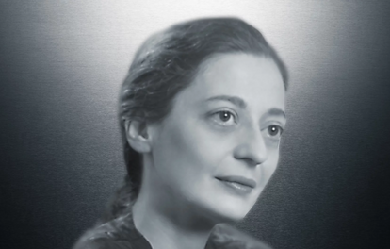
Helen Joy Davidman (18 April 1915 – 13 July 1960) was an American poet and writer. Often referred to as a child prodigy, she earned a master's degree from Columbia University in English literature at age twenty in 1935. For her book of poems, Letter to a Comrade, she won the Yale Series of Younger Poets Competition in 1938 and the Russell Loines Award for Poetry in 1939. She was the author of several books, including two novels.
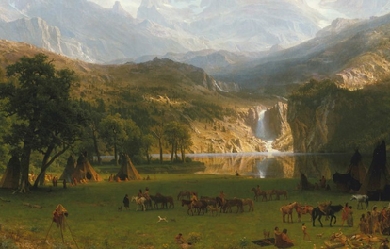
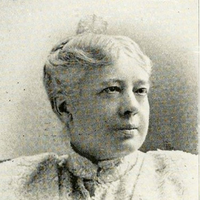
Margaret Elizabeth Sangster (February 22, 1838 – 1912) was an American poet, author, and editor. She was popular in the late 19th and early 20th century. Sangster was the daughter of John Munson of Ireland and Margaret Chisholm of New York. Her father was in the marble industry in New York City. Margaret and her younger sister Isabell grew up in a very religious household and the two sisters were well educated. Sangster held editorial positions with a number of periodicals including, Hearth and Home, The Christian at Work, Harper's Young People and eventually became an editor at Harper’s Bazaar from 1889 to 1899. Through her work she became acquainted with notable people of her age, including Mark Twain and Helen Keller. Other than Harper’s Bazaar, she contributed to Ladies' Home Journal, Hearth and Home, and the Christian Intelligencer, The Christian Union (later became The Outlook), The Congregationalist and The Christian Herald. Among Sangster's prose works are several volumes of stories for children, and of these, Little Jamie was written when she was seventeen years old. Hours with Girls and Winsome Womanhood were her most popular works. Her volumes of poetry include, Poems of the Household, Home Fairies and Heart Flowers, On the Road Home and Easter Bells. Sangster grew up a devout member of the Dutch Reformed Church and wrote many hymns and sacred texts. These include a setting of the Te Deum Laudamus and a hymn called, Thine is the Power, which gained a fair degree of popularity in its time.[2] In 1902 Sangster wrote the introduction to the book, Happenings in Our Home, a book where a family could record the important events in their lives such as births, deaths, weddings, vacations, and holidays. Sangster spent most of her life in New York and New Jersey. She married George Sangster in 1858 and essentially gave up writing until after his death in 1871. She never remarried and she died in 1912. Her nephew, Charles Chisholm Brainerd, was married to the author Eleanor Hoyt Brainerd.


Julia Ward Howe (/haʊ/; May 27, 1819– October 17, 1910) was an American poet and author, best known for writing “The Battle Hymn of the Republic”. She was also an advocate for abolitionism and was a social activist, particularly for women’s suffrage. Personal life Early life Howe was born in New York City. She was the fourth of seven children born to an upper middle class couple. Her father Samuel Ward III was a Wall Street stockbroker, well-to-do banker, and strict Calvinist. Her mother was the occasional poet Julia Rush Cutler, related to Francis Marion, the “Swamp Fox” of the American Revolution. She died of tuberculosis when her daughter was five years old. She was educated by private tutors and in schools for young ladies until she was sixteen. Her eldest brother Samuel Cutler Ward travelled in Europe and brought home a private library. She had access to these modern works, many contradicting the Calvinistic world view presented by her father. She became well read and intelligent, though as much a social butterfly as she was a scholar. She was brought into contact with some of the greatest minds of her time because of her father’s status as a successful banker. She interacted with Charles Dickens, Charles Sumner, and Margaret Fuller. Sam married into the prominent Astor family, allowing him great social freedom that he shared with his sister. The siblings were cast into mourning time when their father died in 1839; shortly afterwards, brother Henry died, then Samuel’s wife Emily died, along with their newborn child. Marriage and children Julia was visiting Boston in 1841 when she met Samuel Gridley Howe (1801—1876), a physician and reformer who founded the Perkins School for the Blind. They announced their engagement quite suddenly on February 21. Howe had courted her for a time, but he had more recently shown an interest in her sister Louisa. In 1843, they married despite their eighteen-year age difference. She gave birth to their first child while honeymooning in Europe, eleven months later. She bore their last child in 1858 at the age of forty. They had six children: Julia Romana Howe (1844–1886), Florence Marion Howe (1845–1922), Henry Marion Howe (1848–1922), Laura Elizabeth Howe (1850–1943), Maud Howe (1855–1948), and Samuel Gridley Howe, Jr. (1858–1863). Julia was likewise an aunt of novelist Francis Marion Crawford. Howe lived and raised her children in South Boston, while her husband pursued his advocacy work. She hid her unhappiness with their marriage behind a cheerful demeanor and singing at parties, earning the nickname “the family champagne” from her children. She made frequent visits to Gardiner, Maine where she stayed at “The Yellow House,” a home built originally in 1814 and later home to her daughter Laura. Writing She was unhappy with her surroundings, so she took lectures, and studied foreign languages, and wrote plays and dramas. Julia had published essays on Goethe, Schiller and Lamartine before her marriage to Howe, in the New York Review and Theological Review. Her book Passion-Flowers was published in December 1853. The book collected intensely personal poems and was written without the awareness of her husband, who was then editing the Free Soil newspaper The Commonwealth. Her second anonymous collection, Words for the Hour, appeared in 1857. She went on to write plays such as Leonora, The World’s Own, and Hippolytus. These works all contained allusions to her stultifying marriage. She went on many trips, several for missions. In 1860, she published a book, A Trip to Cuba, which told of an 1859 trip she had taken. It had generated outrage from William Lloyd Garrison, an abolitionist, for its derogatory view of Blacks. (Julia had only recently become an abolitionist in the 1850s, her family believing it to be a social evil. She thus believed it was morally right to free the slaves but did not believe in social or racial equality.) Several letters on High Newport society were published in the New York Tribune in 1860, as well. Howe’s being a published author troubled her husband greatly, especially due to the fact that her poems many times had to do with critiques of women’s roles as wives, her own marriage, and women’s place in society. Their marriage problems escalated to the point where they separated in 1852. Samuel, when he became her husband, had also taken complete control of her estate income. Upon her husband’s death in 1876, she had found that through a series of bad investments that most of her money had been spent. Howe’s writing and social activism were greatly shaped by her upbringing and married life. Much study has gone into her difficult marriage and how it influenced her work, both written and active. Social activism She was inspired to write “The Battle Hymn of the Republic” after she and her husband visited Washington, D.C., and met Abraham Lincoln at the White House in November 1861. During the trip, her friend James Freeman Clarke suggested she write new words to the song “John Brown’s Body”, which she did on November 19. The song was set to William Steffe’s already-existing music and Howe’s version was first published in the Atlantic Monthly in February 1862. It quickly became one of the most popular songs of the Union during the American Civil War. Now that Howe was in the public eye, she produced eleven issues of the literary magazine, Northern Lights, in 1867. That same year she wrote about her travels to Europe in From the Oak to the Olive. After the war she focused her activities on the causes of pacifism and women’s suffrage. By 1868, Julia’s husband no longer opposed her involvement in public life, so Julia decided to become active in reform. She helped found the New England Women’s Club and the New England Woman Suffrage Association. She served as president for nine years beginning in 1868. In 1869, she became co-leader with Lucy Stone of the American Woman Suffrage Association. Then, in 1870, she became president of the New England Women’s Club. After her husband’s death in 1876, she focused more on her interests in reform. She was the founder and from 1876 to 1897 president of the Association of American Women, which advocated for women’s education. She also served as president of organizations like the Massachusetts Woman Suffrage Association and the New England Suffrage Association. In 1870 she founded the weekly Woman’s Journal, a suffragist magazine which was widely read. She contributed to it for twenty years. That same year, she wrote her “Appeal to womanhood throughout the world”, later known as the Mother’s Day Proclamation. It asked women from the world to join for world peace. (See Category:Pacifist feminism.) In 1872, she asked that “Mother’s Day” be celebrated on the 2nd of June. Her efforts were not successful, and by 1893 she was wondering if the 4th of July could be remade into “Mother’s Day”. In 1874, she edited a coeducational defense titled Sex and Education. She wrote a collection about the places she lived in 1880 called Modern Society. In 1883, Howe published a biography of Margaret Fuller. Then, in 1885 she published another collection of lectures called Is Polite Society Polite? ("Polite society" is a euphemism for the upper class.) Finally in 1899 she published her popular memoirs, Reminiscences. She continued to write until her death. In 1881, Howe was elected president of the Association for the Advancement of Women. Around the same time, Howe went on a speaking tour of the Pacific coast, and founded the Century Club of San Francisco. In 1890, she helped found the General Federation of Women’s Clubs, to reaffirm the Christian values of frugality and moderation. From 1891-1893, she served as president for the second time of the Massachusetts Woman Suffrage Association. Until her death, she was president of the New England Woman Suffrage Association. From 1893 to 1898 she directed the General Federation of Women’s Clubs, and headed the Massachusetts Federation of Women’s Clubs. In 1908 Julia was the first woman to be elected to the American Academy of Arts and Letters, a society; its goal is to “foster, assist, and sustain excellence” in American literature, music, and art. Death Howe’s accomplishments mostly reside in her contribution to women’s rights. She laid the foundation for women’s rights groups both in her own home and in the public eye. Howe died of pneumonia October 17, 1910, at her home, Oak Glen, in Portsmouth, Rhode Island at the age of 91. She is buried in the Mount Auburn Cemetery in Cambridge, Massachusetts. At her memorial service approximately 4,000 individuals sang “Battle Hymn of the Republic” as a sign of respect as it was the custom to sing that song at each of Julia’s speaking engagements. After her death, her children collaborated on a biography, published in 1916. It won the Pulitzer Prize for Biography. Honors On January 28, 1908, at age 88, Howe became the first woman elected to the American Academy of Arts and Letters. Howe was inducted posthumously into the Songwriters Hall of Fame in 1970. She has been honored by the U.S. Postal Service with a 14¢ Great Americans series postage stamp issued in 1987. The Julia Ward Howe School of Excellence in Chicago’s Austin community is named in her honor. The Howe neighborhood in Minneapolis, MN was named for her. The Julia Ward Howe Academics Plus Elementary School in Philadelphia was named in her honor in 1913. It celebrates its 100th anniversary in 2013-14. Her Rhode Island home, Oak Glen, was added to the National Register of Historic Places in 1978. Her Boston home is a stop on the Boston Women’s Heritage Trail. Works and collections Poetry Passion-Flowers (1854) Words for the Hour (1857) From Sunset Ridge: Poems Old and New (1898) Later Lyrics (1866) At Sunset (published posthumously, 1910) Other works The Hermaphrodite. Incomplete, but probably composed between 1846 and 1847. Published by University of Nebraska Press, 2004 From the Oak to the Olive (travel writing, 1868) Modern Society (essays, 1881) Margaret Fuller (Marchesa Ossoli) (biography, 1883) Woman’s work in America (1891) Is Polite Society Polite? (essays, 1895) Reminiscences: 1819–1899 (autobiography, 1899)

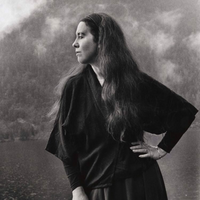
Tess Gallagher (born July 21, 1943 in Port Angeles, Washington) is an American poet, essayist, and short story writer. She attended the University of Washington, where she studied creative writing with Theodore Roethke and later Nelson Bentley as well as David Wagoner and Mark Strand. Her honors include a fellowship from the Guggenheim Foundation, two National Endowment for the Arts awards, the The Maxine Cushing Gray Endowed Libraries Visiting Writers Fellowship (University of Washington), and the Elliston Award for “best book of poetry published by a small press” for the collection Instructions to the Double (1976). Her late husband, Raymond Carver, encouraged her to write short stories, some of which were collected in The Lover of Horses (1987) and At the Owl Woman Saloon (1996). Her book Moon Crossing Bridge is a collection of love poems written for Carver after his death from cancer in 1988. “Moon Crossing Bridge” was followed in 2002 by the collection “Dear Ghosts.” Gallagher has taught at many colleges, most recently at Bucknell University and Whitman College. In December 2006, she published an essay in The Sun Magazine, titled “Instead of Dying”, about alcoholism and Raymond Carver’s having maintained his sobriety. The essay is an adaptation of a talk she initially delivered at the Welsh Academy’s Academi Intoxication Conference in 2006. The first lines read: “Instead of dying from alcohol, Raymond Carver chose to live. I would meet him five months after this choice, so I never knew the Ray who drank, except by report and through the characters and actions of his stories and poems.” Distant Rain, published in 2006, is a conversation between Tess and Jakuchō Setouchi, a Buddhist nun from Kyoto, which took place after Carver’s death.
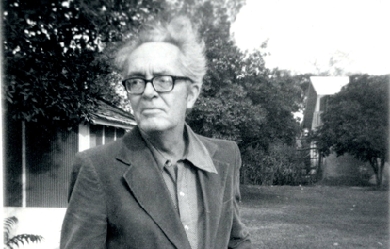

Alan Dugan (February 12, 1923– September 3, 2003) was an American poet. His first volume Poems published in 1961 was a chosen by the Yale Series of Younger Poets and went on to win the National Book Award for Poetry and the Pulitzer Prize for Poetry. His last volume, entitled Poems Seven: New and Complete Poetry, was published in 2001 by Seven Stories Press in New York and won Dugan a second National Book Award. Since his death in 2003, a complete volume of collected poetry has yet to appear.
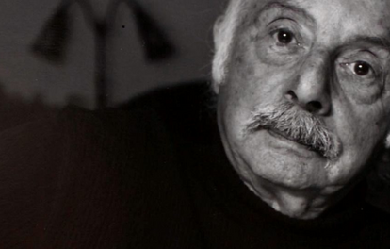

Stanley Jasspon Kunitz (July 29, 1905 – May 14, 2006) was an American poet. He was appointed Poet Laureate Consultant in Poetry to the Library of Congress twice, first in 1974 and then again in 2000. Biography Kunitz was born in Worcester, Massachusetts, the youngest of three children, to Yetta Helen (née Jasspon) and Solomon Z. Kunitz, both of Jewish Russian Lithuanian descent.His father, a dressmaker of Russian Jewish heritage, committed suicide in a public park six weeks before Stanley was born. After going bankrupt, he went to Elm Park in Worcester, and drank carbolic acid. His mother removed every trace of Kunitz’s father from the household. The death of his father would be a powerful influence of his life.Kunitz and his two older sisters, Sarah and Sophia, were raised by his mother, who had made her way from Yashwen, Kovno, Lithuania by herself in 1890, and opened a dry goods store. Yetta remarried to Mark Dine in 1912. Yetta and Mark filed for bankruptcy in 1912 and then were indicted by the U.S. District Court for concealing assets. They pleaded guilty and turned over USD$10,500 to the trustees. Mark Dine died when Kunitz was fourteen, when, while hanging curtains, he suffered a heart attack.At fifteen, Kunitz moved out of the house and became a butcher’s assistant. Later he got a job as a cub reporter on The Worcester Telegram, where he would continue working during his summer vacations from college.Kunitz graduated summa cum laude in 1926 from Harvard College with an English major and a philosophy minor, and then earned a master’s degree in English from Harvard the following year. He wanted to continue his studies for a doctorate degree, but was told by the university that the Anglo-Saxon students would not like to be taught by a Jew.After Harvard, he worked as a reporter for The Worcester Telegram, and as editor for the H. W. Wilson Company in New York City. He then founded and edited Wilson Library Bulletin and started the Author Biographical Studies. Kunitz married Helen Pearce in 1930; they divorced in 1937. In 1935 he moved to New Hope, Pennsylvania and befriended Theodore Roethke. He married Eleanor Evans in 1939; they had a daughter Gretchen in 1950. Kunitz divorced Eleanor in 1958.At Wilson Company, Kunitz served as co-editor for Twentieth Century Authors, among other reference works. In 1931, as Dilly Tante, he edited Living Authors, a Book of Biographies. His poems began to appear in Poetry, Commonweal, The New Republic, The Nation, and The Dial. During World War II, he was drafted into the Army in 1943 as a conscientious objector, and after undergoing basic training three times, served as a noncombatant at Gravely Point, Washington in the Air Transport Command in charge of information and education. He refused a commission and was discharged with the rank of staff sergeant.After the war, he began a peripatetic teaching career at Bennington College (1946–1949; taking over from his friend Roethke). He subsequently taught at the State University of New York at Potsdam (then the New York State Teachers College at Potsdam) as a full professor (1949-1950; summer sessions through 1954), the New School for Social Research (lecturer; 1950-1957), the University of Washington (visiting professor; 1955-1956), Queens College (visiting professor; 1956-1957), Brandeis University (poet-in-residence; 1958-1959) and Columbia University (lecturer in the School of General Studies; 1963-1966) before spending 18 years as an adjunct professor of writing at Columbia’s School of the Arts (1967-1985). Throughout this period, he also held visiting appointments at Yale University (1970), Rutgers University–Camden (1974), Princeton University (1978) and Vassar College (1981).After his divorce from Eleanor, he married the painter and poet Elise Asher in 1958. His marriage to Asher led to friendships with artists like Philip Guston and Mark Rothko.Kunitz’s poetry won wide praise for its profundity and quality. He was the New York State Poet Laureate from 1987 to 1989. He continued to write and publish until his centenary year, as late as 2005. Many consider that his poetry’s symbolism is influenced significantly by the work of Carl Jung. Kunitz influenced many 20th-century poets, including James Wright, Mark Doty, Louise Glück, Joan Hutton Landis, and Carolyn Kizer. For most of his life, Kunitz divided his time between New York City and Provincetown, Massachusetts. He enjoyed gardening and maintained one of the most impressive seaside gardens in Provincetown. There he also founded Fine Arts Work Center, where he was a mainstay of the literary community, as he was of Poets House in Manhattan. He was awarded the Peace Abbey Courage of Conscience award in Sherborn, Massachusetts in October 1998 for his contribution to the liberation of the human spirit through his poetry.He died in 2006 at his home in Manhattan. He had previously come close to death, and reflected on the experience in his last book, a collection of essays, The Wild Braid: A Poet Reflects on a Century in the Garden. Poetry Kunitz’s first collection of poems, Intellectual Things, was published in 1930. His second volume of poems, Passport to the War, was published fourteen years later; the book went largely unnoticed, although it featured some of Kunitz’s best-known poems, and soon fell out of print. Kunitz’s confidence was not in the best of shape when, in 1959, he had trouble finding a publisher for his third book, Selected Poems: 1928-1958. Despite this unflattering experience, the book, eventually published by Little Brown, received the Pulitzer Prize for Poetry. His next volume of poems would not appear until 1971, but Kunitz remained busy through the 1960s editing reference books and translating Russian poets. When twelve years later The Testing Tree appeared, Kunitz’s style was radically transformed from the highly intellectual and philosophical musings of his earlier work to more deeply personal yet disciplined narratives; moreover, his lines shifted from iambic pentameter to a freer prosody based on instinct and breath—usually resulting in shorter stressed lines of three or four beats. Throughout the 70s and 80s, he became one of the most treasured and distinctive voices in American poetry. His collection Passing Through: The Later Poems won the National Book Award for Poetry in 1995. Kunitz received many other honors, including a National Medal of Arts, the Bollingen Prize for a lifetime achievement in poetry, the Robert Frost Medal, and Harvard’s Centennial Medal. He served two terms as Consultant on Poetry for the Library of Congress (the precursor title to Poet Laureate), one term as Poet Laureate of the United States, and one term as the State Poet of New York. He founded the Fine Arts Work Center in Provincetown, Massachusetts, and Poets House in New York City. Kunitz also acted as a judge for the Yale Series of Younger Poets Competition. Library Bill of Rights Kunitz served as editor of the Wilson Library Bulletin from 1928 to 1943. An outspoken critic of censorship, in his capacity as editor, he targeted his criticism at librarians who did not actively oppose it. He published an article in 1938 by Bernard Berelson entitled “The Myth of Library Impartiality”. This article led Forrest Spaulding and the Des Moines Public Library to draft the Library Bill of Rights, which was later adopted by the American Library Association and continues to serve as the cornerstone document on intellectual freedom in libraries. Awards and honors * 2006 L.L. Winship/PEN New England Award, The Wild Braid: A Poet Reflects on a Century in the Garden Bibliography * * Poetry * The Wild Braid: A Poet Reflects on a Century in the Garden (2005) * The Collected Poems of Stanley Kunitz (NY: W. W. Norton & Company, 2000) * Passing Through, The Later Poems, New and Selected (NY: W. W. Norton & Company, 1995)—winner of the National Book Award * Next-to-Last Things: New Poems and Essays (1985) * The Wellfleet Whale and Companion Poems * The Terrible Threshold * The Coat without a Seam * The Poems of Stanley Kunitz (1928–1978) (1978) * The Testing-Tree (1971) * Selected Poems, 1928-1958 (1958) * Passport to the War (1944) * Intellectual Things (1930)Other writing and interviews: * Conversations with Stanley Kunitz (Jackson, MS: University Press of Mississippi, Literary Conversations Series, 11/2013), Edited by Kent P. Ljungquist * A Kind of Order, A Kind of Folly: Essays and Conversations’ * Interviews and Encounters with Stanley Kunitz (Riverdale-on-Hudson, NY: The Sheep Meadow Press, 1995), Edited by Stanley MossAs editor, translator, or co-translator: * The Essential Blake * Orchard Lamps by Ivan Drach * Story under full sail by Andrei Voznesensky * Poems of John Keats * Poems of Akhmatova by Max Hayward References Wikipedia—https://en.wikipedia.org/wiki/Stanley_Kunitz

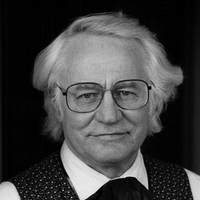
Robert Bly (born December 23, 1926) is an American poet, author, activist and leader of the mythopoetic men’s movement. His most commercially successful book to date was Iron John: A Book About Men (1990), a key text of the mythopoetic men’s movement, which spent 62 weeks on The New York Times Best Seller list. He won the 1968 National Book Award for Poetry for his book The Light Around the Body. Life Bly was born in Lac qui Parle County, Minnesota, to Jacob and Alice Bly, who were of Norwegian ancestry. Following graduation from high school in 1944, he enlisted in the United States Navy, serving two years. After one year at St. Olaf College in Minnesota, he transferred to Harvard University, joining the later famous group of writers who were undergraduates at that time, including Donald Hall, Will Morgan, Adrienne Rich, Kenneth Koch, Frank O’Hara, John Ashbery, Harold Brodkey, George Plimpton and John Hawkes. He graduated in 1950 and spent the next few years in New York. Beginning in 1954, Bly spent two years at the University of Iowa at the Iowa Writers Workshop, completing a master’s degree in fine arts, along with W. D. Snodgrass, Donald Justice, and others. In 1956, he received a Fulbright Grant to travel to Norway and translate Norwegian poetry into English. While there, he found not only his relatives, but became acquainted with the work of a number of major poets whose work was barely known in the United States, among them Pablo Neruda, Cesar Vallejo, Antonio Machado, Gunnar Ekelof, Georg Trakl, Rumi, Hafez, Kabir, Mirabai, and Harry Martinson. Bly determined then to start a literary magazine for poetry translation in the United States. The Fifties, The Sixties, and The Seventies introduced many of these poets to the writers of his generation. He also published essays on American poets. During this time, Bly lived on a farm in Minnesota, with his wife and children. His first marriage was to award-winning short story novelist Carol Bly. They had four children, including Mary Bly—a best-selling novelist and Literature Professor at Fordham University as of 2011—and they divorced in 1979. Since 1980 Bly has been married to the former Ruth Counsell; by that marriage he had a stepdaughter and stepson, although the stepson died in a pedestrian–train incident. Career Bly’s early collection of poems, Silence in the Snowy Fields, was published in 1962, and its plain, imagistic style had considerable influence on American verse of the next two decades. The following year, he published “A Wrong Turning in American Poetry”, an essay in which he argued that the vast majority of American poetry from 1917 to 1963 was lacking in soul and “inwardness” as a result of a focus on impersonality and an objectifying, intellectual view of the world that Bly believed was instigated by the Modernists and formed the aesthetic of most post-World War II American poetry. He criticized the influence of American-born Modernists like Eliot, Pound, Marianne Moore, and William Carlos Williams and argued that American poetry needed to model itself on the more inward-looking work of European and South American poets like Pablo Neruda, César Vallejo, Juan Ramón Jiménez, Antonio Machado, and Rainer Maria Rilke. In 1966, Bly co-founded American Writers Against the Vietnam War and went on to lead much of the opposition to that war among writers. In 1968, he signed the “Writers and Editors War Tax Protest” pledge, vowing to refuse tax payments in protest against the war. In his speech accepting the National Book Award for The Light Around the Body, he announced that he would be contributing the $1000 prize to draft resistance organizations. During the sixties he was of great help to the Bengali Hungryalist poets who faced anti-establishment trial at Kolkata, India. Bly became one of the most important of American protest poets during the Vietnam War; his 1970 poem “The Teeth Mother Naked At Last,” later collected in his collection Sleepers Joining Hands (1973) is a major contribution to this poetry. During the 1970s, he published eleven books of poetry, essays, and translations, celebrating the power of myth, Indian ecstatic poetry, meditation, and storytelling. During the 1980s he published Loving a Woman in Two Worlds, The Wingéd Life: Selected Poems and Prose of Thoreau, The Man in the Black Coat Turns, and A Little Book on the Human Shadow. In 1975, he organized the first annual Great Mother Conference. Throughout the ten-day event, poetry, music, and dance were utilized to examine human consciousness. The conference has been held annually through 2015 in Nobleboro Maine. In the beginning one of its major themes was the goddess or “Great Mother” as she has been known throughout human history. Much of Bly’s 1973 book of poems “Sleepers Joining Hands” is concerned with this theme. In the context of the Vietnam War, a focus on the divine feminine was seen as urgent and necessary. Since that time, the Conference has expanded to consider a wide variety of poetic, mythological, and fairy tale traditions. In the ’80s and ’90s there was much discussion among the conference community about the changes contemporary men were (and are) going through; “the New Father” was then added to the Conference title, in recognition of this and in order to keep the Conference as inclusive as possible. Perhaps his most famous work is Iron John: A Book About Men (1990), an international bestseller which has been translated into many languages and is credited with starting the Mythopoetic men’s movement in the United States. Bly frequently conducts workshops for men with James Hillman, Michael J. Meade, and others, as well as workshops for men and women with Marion Woodman. He maintains a friendly correspondence with Clarissa Pinkola Estés, author of Women Who Run With the Wolves. Bly wrote The Maiden King: The Reunion of Masculine and Feminine with Marion Woodman. Bly was the University of Minnesota Library’s 2002 Distinguished Writer. He received the McKnight Foundation’s Distinguished Artist Award in 2000, and the Maurice English Poetry Award in 2002. He has published more than 40 collections of poetry, edited many others, and published translations of poetry and prose from such languages as Swedish, Norwegian, German, Spanish, Persian and Urdu. His book The Night Abraham Called to the Stars was nominated for a Minnesota Book Award. He also edited the prestigious Best American Poetry 1999 (Scribners). In 2006 the University of Minnesota purchased Bly’s archive, which contained more than 80,000 pages of handwritten manuscripts; a journal spanning nearly 50 years; notebooks of his “morning poems”; drafts of translations; hundreds of audio and videotapes, and correspondence with many writers such as James Wright, Donald Hall and James Dickey. The archive is housed at Elmer L. Andersen Library on the University of Minnesota campus. The university paid $775,000 from school funds and private donors. In February 2008, Bly was named Minnesota’s first poet laureate. In that year he also contributed a poem and an Afterword to From the Other World: Poems in Memory of James Wright. In February 2013, he was awarded the Robert Frost Medal, a lifetime achievement recognition given by the Poetry Society of America. Thought and the Men’s Movement Much of Bly’s writing focuses on what he saw as the particularly troubled situation in which many males find themselves today. He understood this to be a result of, among other things, the decline of traditional fathering which left young boys unguided through the stages of life leading to maturity. He claimed that in contrast with women who are better informed by their bodies (notably by the beginning and end of their menstrual cycle), men need to be actively guided out of boyhood and into manhood by their elders. Pre-modern cultures had elaborate myths, often enacted as rites of passage, as well as “men’s societies” where older men would teach young boys about these gender-specific issues. As modern fathers have become increasingly absent, this knowledge is no longer being passed down the generations, resulting in what he referred to as a Sibling Society. The “Absence of the Father” is a recurrent theme in Bly’s work and many of the phenomena of depression, juvenile delinquency and lack of leadership in business and politics are linked to it. Bly therefore sees today’s men as half-adults, trapped between boyhood and maturity, in a state where they find it hard to become responsible in their work as well as leaders in their communities. Eventually they might become weak or absent fathers themselves which will lead this behaviour to be passed down to their children. In his book The Sibling Society (1997), Bly argues that a society formed of such men is inherently problematic as it lacks creativity and a deep sense of empathy. The image of half-adults is further reinforced by popular culture which often portrays fathers as naive, overweight and almost always emotionally co-dependent. Historically this represents a recent shift from a traditional patriarchal model and Bly believes that women rushed to fill the gap that was formed through the various youth movements during the 1960s, enhancing men’s emotional capacities and helping them to connect with women’s age-old pain of repression. It has however also led to the creation of “soft males” which lacked the outwardly directed strength to revitalize the community with assertiveness and a certain warrior strength. In Bly’s view, a potential solution lies in the rediscovery of the meanings hidden in traditional myths and fairytales as well as works of poetry. He researched and collected myths that concern male maturity, often originating from the Grimms’ Fairy Tales and published them in various books, Iron John being the best known example. In contrast to the continual pursuit of higher achievements, that is constantly taught to young men today, the theme of spiritual descent (often being referred to by its Greek term κατάβασις) which is to be found in many of these myths, is presented as a necessary step for coming in contact with the deeper aspects of the masculine self and achieving its full potential. This is often presented as hero, often during the middle of his quest, going underground to pass a period of solitude and sorrow in semi-bestial mode. Bly notices that a cultural space existed in most traditional societies for such a period in a man’s life, in the absence of which, many men today go into a depression and alcoholism as they subconsciously try to emulate this innate ritual. Bly was influenced by the Swiss psychiatrist Carl Jung who developed the theory of archetypes, as the discrete structures of the Psyche which emerge as images in both art and myths. The Powerful King, the Evil Witch and the Beautiful Maiden are, according to Jung, imprints of the collective unconscious and Bly wrote extensively about their meaning and relations to modern life. As an example and in accordance with Jung, he considered the Witch to be that part of the male psyche upon which the negative and destructive side of a woman is imprinted and which first developed during infancy to store the imperfections of one’s own mother’s. As a consequence, the Witch’s symbols are essentially inverted motherly symbols, where the loving act of cooking is transformed into the brewing of evil potions and knitting clothes takes the form of spider’s web. The feeding process is also reversed, with the child now in danger of being eaten to feed the body of the Witch rather than being fed by the mother’s own body. In that respect, the Witch is a mark of arrested development on the part of the man as it guards against feminine realities that the his psyche is not yet able to incorporate fully. Fairy tales according to this interpretation mostly describe internal battles laid out in externally, where the hero saves his future bride by killing a witch, as in “The Drummer” (Grimms tale 193). This particular concept is expanded in Bly’s 1989 talk “The Human Shadow” and the book it presented. Works References Wikipedia—https://en.wikipedia.org/wiki/Robert_Bly
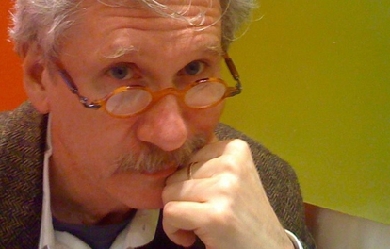
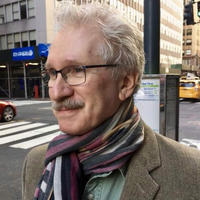
Reginald Gibbons (born 1947) is an American poet, fiction writer, translator, literary critic, and Professor of English and Classics at Northwestern University and Director of the Center for the Writing Arts there. Gibbons has published numerous books, as well as poems, short stories, essays and reviews in journals and magazines, has held Guggenheim Foundation and NEA fellowships in poetry and a research fellowship from the Center for Hellenic Studies in Washington D.C. He has won the Anisfield-Wolf Book Award, the Carl Sandburg Prize, the Folger Shakespeare Library’s O. B. Hardison, Jr. Poetry Prize, and other honors, among them the inclusion of his work in Best American Poetry and Pushcart Prize anthologies. His book Creatures of a Day was a finalist for the 2008 National Book Award for poetry. He attended public school in Spring Branch (at that time, outside Houston, Texas; now incorporated into the city), Princeton University (BA Spanish and Portuguese), and Stanford University (MA in English and Creative Writing; PhD in Comparative Literature). Before moving to Northwestern University, he taught creative writing at Princeton and Columbia. At Northwestern, he was the editor of TriQuarterly magazine from 1981 to 1997, and co-founded TriQuarterly Books (after 1997, an imprint of Northwestern University Press). As the editor of TriQuarterly, he edited or co-edited the special issues Chicago (1984), From South Africa: New Writing, Photography and Art (1987), A Window on Poland (1983), Prose from Spain (1983), New Writing from Mexico (1992), and others, as well as many general issues of the magazine. He edited two works of William Goyen (1915-1983): the 50th Anniversary edition of The House of Breath and the Goyen’s posthumously published second novel, Half a Look of Cain (both published by Northwestern University Press). In 1989, he was one of a group of co-founders of the Guild Literary Complex (Chicago), a literary presenting organization, where he continues to volunteer, and he is a member of the large team that is creating the American Writers Museum (Chicago; opening in 2017). Career * Lecturer in creative writing, Princeton University (Princeton, NJ), 1976-1980 * Lecturer in creative writing, Columbia University School of General Studies, 1980-81 * Professor of English, Northwestern University (Evanston, IL), 1981- * Editor of TriQuarterly magazine, 1981-1997 * Core faculty member of MFA Program for Writers, Warren Wilson College (Asheville, NC), 1989-2011 * Co-founder and member of the board of directors, Guild Complex, 1989- * Member, National Advisory Council and Content Leadership Team, American Writers Museum, 2012- Poetry * Roofs Voices Roads. (Quarterly Review of Literature, 1979). * The Ruined Motel. (Houghton, 1981). * Saints. (Persea Books, 1986). * Maybe It Was So. (University of Chicago Press, 1991). ISBN 978-0-226-29056-0 * Sparrow: New and Selected Poems. (LSU Press, 1997). ISBN 978-0-8071-2232-7 * Homage to Longshot O’Leary: Poems. (Holy Cow! Press, 1999). * It’s Time: Poems. (LSU Press, 2002). ISBN 978-0-8071-2815-2 * Creatures of a Day: Poems. (LSU Press, 2008). ISBN 978-0-8071-3318-7 * Desde una barca de papel (Poemas 1981-2008). (Littera Libros (Villanueva de la Serena, SPAIN), 2009. (Bilingual edition) * Slow Trains Overhead: Chicago Poems and Stories. (University of Chicago Press, 2010). ISBN 978-0-226-29058-4 * L’abitino blue. (Gattomerlino (Rome, ITALY). (Bilingual edition) * Last Lake. (University of Chicago Press, 2016. ISBN 978-0-226-41745-5 Fiction * Sweetbitter: A Novel. (LSU Press, 2003). ISBN 978-0-8071-2871-8 * Five Pears or Peaches. (Broken Moon Press, 1991). * Orchard in the Street. (BOA Editions, Ltd, forthcoming 2017). Other Books * Sophocles, Selected Poems: Odes and Fragments (Princeton University Press, 2008.) Translated and Introduced by Reginald Gibbons. ISBN 978-0-691-13024-8 * How Poems Think (University of Chicago Press, 2015). ISBN 978-0-226-27800-1 * Sophocles, Antigone (Oxford University Press, 2007). Translated by Reginald Gibbons and Charles Segal. ISBN 978-0-19514310-2 * Goyen: Autobiographical Essays, Notesbooks, Evocations, Interviews, by William Goyen (University of Texas Press, 2007. ISBN 978-0-292-72225-5 * The Complete Sophocles, Volume I: The Theban Plays (Oxford University Press, 2011.) Antigone translated by Reginald Gibbons and Charles Segal. ISBN 978-0-19-538880-0 * The Complete Euripides, Volume IV: Bacchae and Other Plays (Oxford University Press, 2009.) Bacchae translated by Reginald Gibbons and Charles Segal. ISBN 978-0-19-537340-0 * New Writing from Mexico, edited by Reginald Gibbons. TriQuarterly Books, 1992. * Thomas McGrath: Life and the Poem, edited by Reginald Gibbons and Terrence Des Press. (University of Illinois Press, 1992. ISBN 0-252-06177-2 References Wikipedia—https://en.wikipedia.org/wiki/Reginald_Gibbons
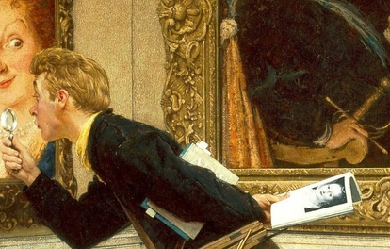

Karl Jay Shapiro (November 10, 1913– May 14, 2000) was an American poet. He was appointed the fifth Poet Laureate Consultant in Poetry to the Library of Congress in 1946. Biography Karl Shapiro was born in Baltimore, Maryland and graduated from the Baltimore City College high school. He attended the University of Virginia before World War II, and immortalized it in a scathing poem called “University,” which noted that “to hate the Negro and avoid the Jew is the curriculum.” He did not return after his military service. Karl Shapiro, a stylish writer with a commendable regard for his craft, wrote poetry in the Pacific Theater while he served there during World War II. His collection V-Letter and Other Poems, written while Shapiro was stationed in New Guinea, was awarded the Pulitzer Prize for Poetry in 1945, while Shapiro was still in the military. Shapiro was American Poet Laureate in 1946 and 1947. (At the time this title was Consultant in Poetry to the Library of Congress which was changed by Congress in 1985 to Poet Laureate Consultant in Poetry to the Library of Congress.) Poems from his earlier books display a mastery of formal verse with a modern sensibility that viewed such topics as automobiles, house flies, and drug stores as worthy of attention. In 1963, the poet/critic Randall Jarrell praised Shapiro’s work: Karl Shapiro’s poems are fresh and young and rash and live; their hard clear outlines, their flat bold colors create a world like that of a knowing and skillful neoprimitive painting, without any of the confusion or profundity of atmosphere, of aerial perspective, but with notable visual and satiric force. The poet early perfected a style, derived from Auden but decidedly individual, which he has not developed in later life but has temporarily replaced with the clear Rilke-like rhetoric of his Adam and Eve poems, the frankly Whitmanesque convolutions of his latest work. His best poem—poems like “The Leg,” “Waitress,” “Scyros,” “Going to School,” “Cadillac”—have a real precision, a memorable exactness of realization, yet they plainly come out of life’s raw hubbub, out of the disgraceful foundations, the exciting and disgraceful surfaces of existence. In his later work, he experimented with more open forms, beginning with The Bourgeois Poet (1964) and continuing with White-Haired Lover (1968). The influences of Walt Whitman, D. H. Lawrence, W. H. Auden and William Carlos Williams were evident in his work. Shapiro’s interest in formal verse and prosody led to his writing multiple books on the subject including the long poem Essay on Rime (1945), A Bibliography of Modern Prosody (1948), and A Prosody Handbook (with Robert Beum, 1965; reissued 2006). His Selected Poems appeared in 1968. Shapiro also published one novel, Edsel (1971) and a three-part autobiography simply titled, “Poet” (1988–1990). Shapiro edited the prestigious magazine, Poetry for several years, and he was a professor of English at the University of Nebraska-Lincoln, where he edited Prairie Schooner, and at the University of California, Davis, from which he retired in the mid-1980s. His other works include Person, Place and Thing (1942), (with Ernst Lert) the libretto to Hugo Weisgall’s opera The Tenor (1950), To Abolish Children (1968), and The Old Horsefly (1993). Shapiro received the 1969 Bollingen Prize for Poetry, sharing the award that year with John Berryman. He died in New York City, aged 86, on May 14, 2000. More recent editions of his work include The Wild Card: Selected Poems Early and Late (1998) and Selected Poems (2003). Shapiro’s last work, Coda: Last Poems, (2008) was recently published in a volume organized posthumously by editor Robert Phillips. The poems, divided into three sections according to love poems to his last wife, poems concerning roses, and other various poems, were discovered in the drawers of Shapiro’s desk by his wife two years after his death. Awards * Jeanette S Davis Prize and Levinson prize, both from Poetry in 1942 * Contemporary Poetry prize, 1943 * American Academy of Arts and Letters grant, 1944 * Guggenheim Foundation fellowships, 1944, 1953 * Pulitzer Prize in poetry, 1945, for V-Letter and Other Poems * Shelley Memorial Prize, 1946 * Poetry Consultant at the Library of Congress (United States Poet Laureate), 1946–47 * Kenyon School of Letters fellowship, 1956–57 * Eunice Tietjens Memorial Prize, 1961 * Oscar Blumenthal Prize, Poetry, 1963 * Bollingen Prize, 1968 * Robert Kirsch Award, LA Times, 1989 * Charity Randall Citation, 1990 * Fellow in American Letters, Library of Congress Bibliography Poetry collections * * Adult Bookstore (1976) * Collected Poems, 1940–1978 (1978) * Essay on Rime (1945) * New and Selected Poems, 1940–1987 (1988) * Person, Place, and Thing (1942) * Place of Love (1943) * Poems (1935) * Poems 1940-1953 (1953) * Poems of a Jew (1950) * Selected Poems (Random House, 1968) * Selected Poems (Library of America, 2003), edited by John Updike. * The Bourgeois Poet (1964) * The Old Horsefly (1993) * The Place of Love (1943) * Trial of a Poet (1947) * V-Letter and Other Poems (1945) * White Haired Lover (1968) * The Wild Card: Selected Poems, Early and Late (1998) * Coda: Last Poems (2008) Autobiography * * Poet: Volume I: The Younger Son (1988) * Reports of My Death (1990) * Poet: An Autobiography in Three Parts (Chapel Hill: Algonquin Books, 1988–1990) Essay collections * * The Poetry Wreck (1975) * To Abolish children and Other Essays (1968) * A Primer for Poets (1965) * In Defense of Ignorance (1960) * Randall Jarrell (1967) * Start With the Sun: Studies in the Whitman Tradition, with James E. Miller, Jr., and Bernice Slote (1963) * Prose Keys to Modern Poetry (1962) Novels * * Edsel (1971) Secondary sources * * Lee Bartlett, Karl Shapiro: A Descriptive Bibliography 1933-1977 (New York: Garland, 1979) * Gail Gloston, Karl Shapiro, Delmore Schwartz, and Randall Jarrell: The Image of the Poet in the Late 1940s (Thesis: Reed College, 1957) * Charles F. Madden, Talks With Authors (Carbondale: Southern Illinois U. Press, 1968) * Hans Ostrom, "Karl Shapiro 1913-2000" (poem), in The Coast Starlight: Collected Poems 1976-2006 (Indianapolis, 2006) * Joseph Reino, Karl Shapiro (New York: Twayne, 1981) * Stephen Stepanchev, American Poetry Since 1945: A Critical Survey (1965) * Melvin B. Tolson, Harlem Gallery (1965), with an introduction by Karl Shapiro * Sue Walker, ed., Seriously Meeting Karl Shapiro (Mobile: Negative Capability Press, 1993) * William White, Karl Shapiro: A Bibliography, with a note by Karl Shapiro (Detroit: Wayne State U. Press, 1960) References Wikipedia—https://en.wikipedia.org/wiki/Karl_Shapiro
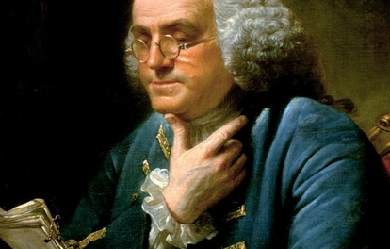
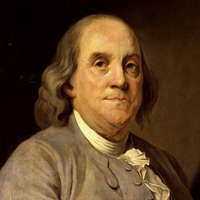
Benjamin Franklin (January 17, 1706 [O.S. January 6, 1705]– April 17, 1790) was one of the Founding Fathers of the United States. A renowned polymath, Franklin was a leading author, printer, political theorist, politician, freemason, postmaster, scientist, inventor, civic activist, statesman, and diplomat. As a scientist, he was a major figure in the American Enlightenment and the history of physics for his discoveries and theories regarding electricity. As an inventor, he is known for the lightning rod, bifocals, and the Franklin stove, among other inventions. He facilitated many civic organizations, including Philadelphia’s fire department and a university. Franklin earned the title of “The First American” for his early and indefatigable campaigning for colonial unity, initially as an author and spokesman in London for several colonies. As the first United States Ambassador to France, he exemplified the emerging American nation. Franklin was foundational in defining the American ethos as a marriage of the practical values of thrift, hard work, education, community spirit, self-governing institutions, and opposition to authoritarianism both political and religious, with the scientific and tolerant values of the Enlightenment. In the words of historian Henry Steele Commager, “In a Franklin could be merged the virtues of Puritanism without its defects, the illumination of the Enlightenment without its heat.” To Walter Isaacson, this makes Franklin “the most accomplished American of his age and the most influential in inventing the type of society America would become.” Franklin became a successful newspaper editor and printer in Philadelphia, the leading city in the colonies, publishing the Pennsylvania Gazette at the age of 23. He became wealthy publishing this and Poor Richard’s Almanack, which he authored under the pseudonym “Richard Saunders”. After 1767, he was associated with the Pennsylvania Chronicle, a newspaper that was known for its revolutionary sentiments and criticisms of the British policies. He pioneered and was first president of the The Academy and College of Philadelphia which opened in 1751 and later became the University of Pennsylvania. He organised and was the first secretary of the American Philosophical Society and was elected president in 1769. Franklin became a national hero in America when, as an agent for several colonies, he spearheaded an effort in London to have the Parliament of Great Britain repeal the unpopular Stamp Act. An accomplished diplomat, he was widely admired among the French as American minister to Paris and was a major figure in the development of positive Franco-American relations. His efforts to secure support for the American Revolution by shipments of crucial munitions proved vital for the American war effort. He was promoted to deputy postmaster-general for the British colonies in 1753, having been Philadelphia postmaster for many years, and this enabled him to set up the first national communications network. After the Revolution he became the first US Postmaster General. He was active in community affairs, colonial and state politics, as well as national and international affairs. From 1785 to 1788, he served as governor of Pennsylvania. Although he initially owned and dealt in slaves, by the 1750s he argued against slavery from an economic perspective and became one of the most prominent abolitionists. His colorful life and legacy of scientific and political achievement, and status as one of America’s most influential Founding Fathers, have seen Franklin honored on coinage and the $100 bill; warships; the names of many towns; counties; educational institutions; corporations; and, more than two centuries after his death, countless cultural references. Early life in Boston Benjamin Franklin was born on Milk Street, in Boston, Massachusetts, on January 17, 1706, and baptized at Old South Meeting House. He was one of seventeen children born to Josiah Franklin, and one of ten born by Josiah’s second wife, Abiah Folger; the daughter of Peter Foulger and Mary Morrill. Among Benjamin’s siblings were his older brother James and his younger sister Jane. Josiah wanted Ben to attend school with the clergy, but only had enough money to send him to school for two years. He attended Boston Latin School but did not graduate; he continued his education through voracious reading. Although “his parents talked of the church as a career” for Franklin, his schooling ended when he was ten. He worked for his father for a time, and at 12 he became an apprentice to his brother James, a printer, who taught Ben the printing trade. When Ben was 15, James founded The New-England Courant, which was the first truly independent newspaper in the colonies. When denied the chance to write a letter to the paper for publication, Franklin adopted the pseudonym of “Mrs. Silence Dogood”, a middle-aged widow. Mrs. Dogood’s letters were published, and became a subject of conversation around town. Neither James nor the Courant’s readers were aware of the ruse, and James was unhappy with Ben when he discovered the popular correspondent was his younger brother. Franklin was an advocate of free speech from an early age. When his brother was jailed for three weeks in 1722 for publishing material unflattering to the governor, young Franklin took over the newspaper and had Mrs. Dogood (quoting Cato’s Letters) proclaim: “Without freedom of thought there can be no such thing as wisdom and no such thing as public liberty without freedom of speech.” Franklin left his apprenticeship without his brother’s permission, and in so doing became a fugitive. Philadelphia At age 17, Franklin ran away to Philadelphia, Pennsylvania, seeking a new start in a new city. When he first arrived, he worked in several printer shops around town, but he was not satisfied by the immediate prospects. After a few months, while working in a printing house, Franklin was convinced by Pennsylvania Governor Sir William Keith to go to London, ostensibly to acquire the equipment necessary for establishing another newspaper in Philadelphia. Finding Keith’s promises of backing a newspaper empty, Franklin worked as a typesetter in a printer’s shop in what is now the Church of St Bartholomew-the-Great in the Smithfield area of London. Following this, he returned to Philadelphia in 1726 with the help of Thomas Denham, a merchant who employed Franklin as clerk, shopkeeper, and bookkeeper in his business. Junto and library In 1727, Benjamin Franklin, then 21, created the Junto, a group of “like minded aspiring artisans and tradesmen who hoped to improve themselves while they improved their community.” The Junto was a discussion group for issues of the day; it subsequently gave rise to many organizations in Philadelphia. The Junto was modeled after English coffeehouses that Franklin knew well, and which should become the center of the spread of Enlightenment ideas in Britain. Reading was a great pastime of the Junto, but books were rare and expensive. The members created a library initially assembled from their own books after Franklin wrote: A proposition was made by me that since our books were often referr’d to in our disquisitions upon the inquiries, it might be convenient for us to have them altogether where we met, that upon occasion they might be consulted; and by thus clubbing our books to a common library, we should, while we lik’d to keep them together, have each of us the advantage of using the books of all the other members, which would be nearly as beneficial as if each owned the whole. This did not suffice, however. Franklin conceived the idea of a subscription library, which would pool the funds of the members to buy books for all to read. This was the birth of the Library Company of Philadelphia: its charter was composed by Franklin in 1731. In 1732, Franklin hired the first American librarian, Louis Timothee. The Library Company is now a great scholarly and research library. Newspaperman Upon Denham’s death, Franklin returned to his former trade. In 1728, Franklin had set up a printing house in partnership with Hugh Meredith; the following year he became the publisher of a newspaper called The Pennsylvania Gazette. The Gazette gave Franklin a forum for agitation about a variety of local reforms and initiatives through printed essays and observations. Over time, his commentary, and his adroit cultivation of a positive image as an industrious and intellectual young man, earned him a great deal of social respect. But even after Franklin had achieved fame as a scientist and statesman, he habitually signed his letters with the unpretentious ‘B. Franklin, Printer.’ In 1732, Ben Franklin published the first German language newspaper in America– Die Philadelphische Zeitung– although it failed after only one year, because four other newly founded German papers quickly dominated the newspaper market. Franklin printed Moravian religious books in German. Franklin often visited Bethlehem staying at the Moravian Sun Inn. In a 1751 pamphlet on demographic growth and its implications for the colonies, he called the Pennsylvania Germans “Palatine Boors” who could never acquire the “Complexion” of the English settlers and to “Blacks and Tawneys” as weakening the social structure of the colonies. Although Franklin apparently reconsidered shortly thereafter, and the phrases were omitted from all later printings of the pamphlet, his views may have played a role in his political defeat in 1764. Franklin saw the printing press as a device to instruct colonial Americans in moral virtue. Frasca argues he saw this as a service to God, because he understood moral virtue in terms of actions, thus, doing good provides a service to God. Despite his own moral lapses, Franklin saw himself as uniquely qualified to instruct Americans in morality. He tried to influence American moral life through construction of a printing network based on a chain of partnerships from the Carolinas to New England. Franklin thereby invented the first newspaper chain. It was more than a business venture, for like many publishers since, he believed that the press had a public-service duty. When Franklin established himself in Philadelphia, shortly before 1730, the town boasted two “wretched little” news sheets, Andrew Bradford’s American Mercury, and Samuel Keimer’s Universal Instructor in all Arts and Sciences, and Pennsylvania Gazette. This instruction in all arts and sciences consisted of weekly extracts from Chambers’s Universal Dictionary. Franklin quickly did away with all this when he took over the Instructor and made it The Pennsylvania Gazette. The Gazette soon became Franklin’s characteristic organ, which he freely used for satire, for the play of his wit, even for sheer excess of mischief or of fun. From the first he had a way of adapting his models to his own uses. The series of essays called “The Busy-Body”, which he wrote for Bradford’s American Mercury in 1729, followed the general Addisonian form, already modified to suit homelier conditions. The thrifty Patience, in her busy little shop, complaining of the useless visitors who waste her valuable time, is related to the ladies who address Mr. Spectator. The Busy-Body himself is a true Censor Morum, as Isaac Bickerstaff had been in the Tatler. And a number of the fictitious characters, Ridentius, Eugenius, Cato, and Cretico, represent traditional 18th-century classicism. Even this Franklin could use for contemporary satire, since Cretico, the “sowre Philosopher”, is evidently a portrait of Franklin’s rival, Samuel Keimer. As time went on, Franklin depended less on his literary conventions, and more on his own native humor. In this there is a new spirit—not suggested to him by the fine breeding of Addison, or the bitter irony of Swift, or the stinging completeness of Pope. The brilliant little pieces Franklin wrote for his Pennsylvania Gazette have an imperishable place in American literature. The Pennsylvania Gazette, like most other newspapers of the period, was often poorly printed. Franklin was busy with a hundred matters outside of his printing office, and never seriously attempted to raise the mechanical standards of his trade. Nor did he ever properly edit or collate the chance medley of stale items that passed for news in the Gazette. His influence on the practical side of journalism was minimal. On the other hand, his advertisements of books show his very great interest in popularizing secular literature. Undoubtedly his paper contributed to the broader culture that distinguished Pennsylvania from her neighbors before the Revolution. Like many publishers, Franklin built up a book shop in his printing office; he took the opportunity to read new books before selling them. Franklin had mixed success in his plan to establish an inter-colonial network of newspapers that would produce a profit for him and disseminate virtue. He began in Charleston, South Carolina, in 1731. After the second editor died, his widow Elizabeth Timothy took over and made it a success, 1738–46. She was one of the colonial era’s first woman printers. For three decades Franklin maintained a close business relationship with her and her son Peter who took over in 1746. The Gazette had a policy of impartiality in political debates, while creating the opportunity for public debate, which encouraged others to challenge authority. Editor Peter Timothy avoided blandness and crude bias, and after 1765 increasingly took a patriotic stand in the growing crisis with Great Britain. However, Franklin’s Connecticut Gazette (1755–68) proved unsuccessful. Freemason In 1731, Franklin was initiated into the local Masonic Lodge. He became Grand Master in 1734, indicating his rapid rise to prominence in Pennsylvania. That same year, he edited and published the first Masonic book in the Americas, a reprint of James Anderson’s Constitutions of the Free-Masons. Franklin remained a Freemason for the rest of his life. Common-law marriage to Deborah Read In 1723, at the age of 17, Franklin proposed to 15-year-old Deborah Read while a boarder in the Read home. At that time, Read’s mother was wary of allowing her young daughter to marry Franklin, who was on his way to London at Governor Sir William Keith’s request, and also because of his financial instability. Her own husband had recently died, and Mrs. Read declined Franklin’s request to marry her daughter. While Franklin was in London, his trip was extended, and there were problems with Sir William’s promises of support. Perhaps because of the circumstances of this delay, Deborah married a man named John Rodgers. This proved to be a regrettable decision. Rodgers shortly avoided his debts and prosecution by fleeing to Barbados with her dowry, leaving Deborah behind. Rodgers’s fate was unknown, and because of bigamy laws, Deborah was not free to remarry. Franklin established a common-law marriage with Deborah Read on September 1, 1730. They took in Franklin’s young, recently acknowledged illegitimate son, William, and raised him in their household. In addition, they had two children together. The first, Francis Folger Franklin, born October 1732, died of smallpox in 1736. Their second child, Sarah Franklin, familiarly called Sally, was born in 1743. She eventually married Richard Bache, had seven children, and cared for her father in his old age. Deborah’s fear of the sea meant that she never accompanied Franklin on any of his extended trips to Europe, despite his repeated requests. She wrote to him in November 1769 saying she was ill due to “dissatisfied distress” from his prolonged absence, but he did not return until his business was done. Deborah Read Franklin died of a stroke in 1774, while Franklin was on an extended mission to England; he returned in 1775. William Franklin In 1730, at the age of 24, Franklin publicly acknowledged the existence of William, his son, who was deemed 'illegitimate’ as he was born out of wedlock, and raised him in his household. His mother’s identity is not known. He was educated in Philadelphia. Beginning at about age 30, William studied law in London in the early 1760s. He fathered an illegitimate son, William Temple Franklin, born February 22, 1762. The boy’s mother was never identified, and he was placed in foster care. Franklin later that year married Elizabeth Downes, daughter of a planter from Barbados. After William passed the bar, his father helped him gain an appointment in 1763 as the last Royal Governor of New Jersey. A Loyalist, William and his father eventually broke relations over their differences about the American Revolutionary War. The elder Franklin could never accept William’s position. Deposed in 1776 by the revolutionary government of New Jersey, William was arrested at his home in Perth Amboy at the Proprietary House and imprisoned for a time. The younger Franklin went to New York in 1782, which was still occupied by British troops. He became leader of the Board of Associated Loyalists—a quasi-military organization, headquartered in New York City. They initiated guerrilla forays into New Jersey, southern Connecticut, and New York counties north of the city. When British troops evacuated from New York, William Franklin left with them and sailed to England. He settled in London, never to return to North America. In the preliminary peace talks in 1782 with Britain, “... Benjamin Franklin insisted that loyalists who had borne arms against the United States would be excluded from this plea (that they be given a general pardon). He was undoubtedly thinking of William Franklin.” Success as an author In 1733, Franklin began to publish the noted Poor Richard’s Almanack (with content both original and borrowed) under the pseudonym Richard Saunders, on which much of his popular reputation is based. Franklin frequently wrote under pseudonyms. Although it was no secret that Franklin was the author, his Richard Saunders character repeatedly denied it. “Poor Richard’s Proverbs”, adages from this almanac, such as “A penny saved is twopence dear” (often misquoted as “A penny saved is a penny earned”) and “Fish and visitors stink in three days”, remain common quotations in the modern world. Wisdom in folk society meant the ability to provide an apt adage for any occasion, and Franklin’s readers became well prepared. He sold about ten thousand copies per year—it became an institution. In 1741 Franklin began publishing The General Magazine and Historical Chronicle for all the British Plantations in America, the first such monthly magazine of this type published in America. In 1758, the year he ceased writing for the Almanack, he printed Father Abraham’s Sermon, also known as The Way to Wealth. Franklin’s autobiography, begun in 1771 but published after his death, has become one of the classics of the genre. Daylight saving time (DST) is often erroneously attributed to a 1784 satire that Franklin published anonymously. Modern DST was first proposed by George Vernon Hudson in 1895. Inventions and scientific inquiries Franklin was a prodigious inventor. Among his many creations were the lightning rod, glass harmonica (a glass instrument, not to be confused with the metal harmonica), Franklin stove, bifocal glasses and the flexible urinary catheter. Franklin never patented his inventions; in his autobiography he wrote, “... as we enjoy great advantages from the inventions of others, we should be glad of an opportunity to serve others by any invention of ours; and this we should do freely and generously.” His inventions also included social innovations, such as paying forward. Franklin’s fascination with innovation could be viewed as altruistic; he wrote that his scientific works were to be used for increasing efficiency and human improvement. One such improvement was his effort to expedite news services through his printing presses. Electricity Franklin started exploring the phenomenon of electricity in 1746 when he heard of the Leyden Jar. Franklin proposed that “vitreous” and “resinous” electricity were not different types of “electrical fluid” (as electricity was called then), but the same electrical fluid under different pressures. He was the first to label them as positive and negative respectively, and he was the first to discover the principle of conservation of charge. In 1748 he constructed the first ever electrical battery by placing eleven panes of glass coated with lead hung from silk cords and connected by wires. In 1750, he published a proposal for an experiment to prove that lightning is electricity by flying a kite in a storm that appeared capable of becoming a lightning storm. On May 10, 1752, Thomas-François Dalibard of France conducted Franklin’s experiment using a 40-foot-tall (12 m) iron rod instead of a kite, and he extracted electrical sparks from a cloud. On June 15 Franklin may possibly have conducted his well known kite experiment in Philadelphia, successfully extracting sparks from a cloud. Franklin’s experiment was not written up with credit until Joseph Priestley’s 1767 History and Present Status of Electricity. Franklin was careful to stand on an insulator, keeping dry under a roof to avoid the danger of electric shock. Others, such as Prof. Georg Wilhelm Richmann in Russia, were indeed electrocuted during the months following Franklin’s experiment. In his writings, Franklin indicates that he was aware of the dangers and offered alternative ways to demonstrate that lightning was electrical, as shown by his use of the concept of electrical ground. If Franklin did perform this experiment, he may not have done it in the way that is often described—flying the kite and waiting to be struck by lightning—as it would have been dangerous. Instead he used the kite to collect some electric charge from a storm cloud, which implied that lightning was electrical. On October 19 in a letter to England with directions for repeating the experiment, Franklin wrote: When rain has wet the kite twine so that it can conduct the electric fire freely, you will find it streams out plentifully from the key at the approach of your knuckle, and with this key a phial, or Leyden jar, may be charged: and from electric fire thus obtained spirits may be kindled, and all other electric experiments [may be] performed which are usually done by the help of a rubber glass globe or tube; and therefore the sameness of the electrical matter with that of lightening completely demonstrated. Franklin’s electrical experiments led to his invention of the lightning rod. He noted that conductors with a sharp rather than a smooth point could discharge silently, and at a far greater distance. He surmised that this could help protect buildings from lightning by attaching “upright Rods of Iron, made sharp as a Needle and gilt to prevent Rusting, and from the Foot of those Rods a Wire down the outside of the Building into the Ground;... Would not these pointed Rods probably draw the Electrical Fire silently out of a Cloud before it came nigh enough to strike, and thereby secure us from that most sudden and terrible Mischief!” Following a series of experiments on Franklin’s own house, lightning rods were installed on the Academy of Philadelphia (later the University of Pennsylvania) and the Pennsylvania State House (later Independence Hall) in 1752. In recognition of his work with electricity, Franklin received the Royal Society’s Copley Medal in 1753, and in 1756 he became one of the few 18th-century Americans elected as a Fellow of the Society. He received honorary degrees from Harvard and Yale universities (his first). The cgs unit of electric charge has been named after him: one franklin (Fr) is equal to one statcoulomb. Population studies Franklin had a major influence on the emerging science of demography, or population studies. Thomas Malthus is noted for his rule of population growth and credited Franklin for discovering it. Kammen (1990) and Drake (2011) say Franklin’s “Observations on the Increase of Mankind” (1755) stands alongside Ezra Stiles’ “Discourse on Christian Union” (1760) as the leading works of eighteenth century Anglo-American demography; Drake credits Franklin’s “wide readership and prophetic insight.” In the 1730s and 1740s, Franklin began taking notes on population growth, finding that the American population had the fastest growth rates on earth. Emphasizing that population growth depended on food supplies—a line of thought later developed by Thomas Malthus—Franklin emphasized the abundance of food and available farmland in America. He calculated that America’s population was doubling every twenty years and would surpass that of England in a century. In 1751, he drafted "Observations concerning the Increase of Mankind, Peopling of Countries, &c." Four years later, it was anonymously printed in Boston, and it was quickly reproduced in Britain, where it influenced the economists Adam Smith and later Thomas Malthus. Franklin’s predictions alarmed British leaders who did not want to be surpassed by the colonies, so they became more willing to impose restrictions on the colonial economy. Franklin was also a pioneer in the study of slave demography, as shown in his 1755 essay. Atlantic Ocean currents As deputy postmaster, Franklin became interested in the North Atlantic Ocean circulation patterns. While in England in 1768, he heard a complaint from the Colonial Board of Customs: Why did it take British packet ships carrying mail several weeks longer to reach New York than it took an average merchant ship to reach Newport, Rhode Island? The merchantmen had a longer and more complex voyage because they left from London, while the packets left from Falmouth in Cornwall. Franklin put the question to his cousin Timothy Folger, a Nantucket whaler captain, who told him that merchant ships routinely avoided a strong eastbound mid-ocean current. The mail packet captains sailed dead into it, thus fighting an adverse current of 3 miles per hour (5 km/h). Franklin worked with Folger and other experienced ship captains, learning enough to chart the current and name it the Gulf Stream, by which it is still known today. Franklin published his Gulf Stream chart in 1770 in England, where it was completely ignored. Subsequent versions were printed in France in 1778 and the U.S. in 1786. The British edition of the chart, which was the original, was so thoroughly ignored that everyone assumed it was lost forever until Phil Richardson, a Woods Hole oceanographer and Gulf Stream expert, discovered it in the Bibliothèque Nationale in Paris in 1980. This find received front page coverage in the New York Times. It took many years for British sea captains to adopt Franklin’s advice on navigating the current; once they did, they were able to trim two weeks from their sailing time. In 1853, the oceanographer and cartographer Matthew Fontaine Maury noted that Franklin only charted and codified the Gulf Stream, he did not discover it: Though it was Dr. Franklin and Captain Tim Folger, who first turned the Gulf Stream to nautical account, the discovery that there was a Gulf Stream cannot be said to belong to either of them, for its existence was known to Peter Martyr d’Anghiera, and to Sir Humphrey Gilbert, in the 16th century. Wave theory of light Franklin was, along with his contemporary Leonhard Euler, the only major scientist who supported Christiaan Huygens’ wave theory of light, which was basically ignored by the rest of the scientific community. In the 18th century Newton’s corpuscular theory was held to be true; only after Young’s well known slit experiment in 1803 were most scientists persuaded to believe Huygens’ theory. Meteorology On October 21, 1743, according to popular myth, a storm moving from the southwest denied Franklin the opportunity of witnessing a lunar eclipse. Franklin was said to have noted that the prevailing winds were actually from the northeast, contrary to what he had expected. In correspondence with his brother, Franklin learned that the same storm had not reached Boston until after the eclipse, despite the fact that Boston is to the northeast of Philadelphia. He deduced that storms do not always travel in the direction of the prevailing wind, a concept that greatly influenced meteorology. After the Icelandic volcanic eruption of Laki in 1783, and the subsequent harsh European winter of 1784, Franklin made observations connecting the causal nature of these two separate events. He wrote about them in a lecture series. Traction kiting Though Benjamin Franklin has been most noted kite-wise with his lightning experiments, he has also been noted by many for his using kites to pull humans and ships across waterways. The George Pocock in the book A TREATISE on The Aeropleustic Art, or Navigation in the Air, by means of Kites, or Buoyant Sails noted being inspired by Benjamin Franklin’s traction of his body by kite power across a waterway. In his later years he suggested using the technique for pulling ships. Concept of cooling Franklin noted a principle of refrigeration by observing that on a very hot day, he stayed cooler in a wet shirt in a breeze than he did in a dry one. To understand this phenomenon more clearly Franklin conducted experiments. In 1758 on a warm day in Cambridge, England, Franklin and fellow scientist John Hadley experimented by continually wetting the ball of a mercury thermometer with ether and using bellows to evaporate the ether. With each subsequent evaporation, the thermometer read a lower temperature, eventually reaching 7 °F (−14 °C). Another thermometer showed that the room temperature was constant at 65 °F (18 °C). In his letter Cooling by Evaporation, Franklin noted that, “One may see the possibility of freezing a man to death on a warm summer’s day.” Temperature’s effect on electrical conductivity According to Michael Faraday, Franklin’s experiments on the non-conduction of ice are worth mentioning, although the law of the general effect of liquefaction on electrolytes is not attributed to Franklin. However, as reported in 1836 by Prof. A. D. Bache of the University of Pennsylvania, the law of the effect of heat on the conduction of bodies otherwise non-conductors, for example, glass, could be attributed to Franklin. Franklin writes, “... A certain quantity of heat will make some bodies good conductors, that will not otherwise conduct ...” and again, “... And water, though naturally a good conductor, will not conduct well when frozen into ice.” Oceanography findings An aging Franklin accumulated all his oceanographic findings in Maritime Observations, published by the Philosophical Society’s transactions in 1786. It contained ideas for sea anchors, catamaran hulls, watertight compartments, shipboard lightning rods and a soup bowl designed to stay stable in stormy weather. Decision-making In a 1772 letter to Joseph Priestley, Franklin lays out the earliest known description of the Pro & Con list, a common decision-making technique, now sometimes called a decisional balance sheet: ... my Way is, to divide half a Sheet of Paper by a Line into two Columns, writing over the one Pro, and over the other Con. Then during three or four Days Consideration I put down under the different Heads short Hints of the different Motives that at different Times occur to me for or against the Measure. When I have thus got them all together in one View, I endeavour to estimate their respective Weights; and where I find two, one on each side, that seem equal, I strike them both out: If I find a Reason pro equal to some two Reasons con, I strike out the three. If I judge some two Reasons con equal to some three Reasons pro, I strike out the five; and thus proceeding I find at length where the Ballance lies; and if after a Day or two of farther Consideration nothing new that is of Importance occurs on either side, I come to a Determination accordingly. Oil on water While traveling on a ship, Franklin had observed that the wake of a ship was diminished when the cooks scuttled their greasy water. He studied the effects at Clapham Common, London on a large pond there. “I fetched out a cruet of oil and dropt a little of it on the water... though not more than a teaspoon full, produced an instant calm over a space of several yards square.” He later used the trick to “calm the waters” by carrying “a little oil in the hollow joint of my cane”. Musical endeavors Franklin is known to have played the violin, the harp, and the guitar. He also composed music, notably a string quartet in early classical style. He developed a much-improved version of the glass harmonica, in which the glasses rotate on a shaft, with the player’s fingers held steady, instead of the other way around; this version soon found its way to Europe. Chess Franklin was an avid chess player. He was playing chess by around 1733, making him the first chess player known by name in the American colonies. His essay on “The Morals of Chess” in Columbian magazine in December 1786 is the second known writing on chess in America. This essay in praise of chess and prescribing a code of behavior for the game has been widely reprinted and translated. He and a friend also used chess as a means of learning the Italian language, which both were studying; the winner of each game between them had the right to assign a task, such as parts of the Italian grammar to be learned by heart, to be performed by the loser before their next meeting. Franklin was able to play chess more frequently against stronger opposition during his many years as a civil servant and diplomat in England, where the game was far better established than in America. He was able to improve his playing standard by facing more experienced players during this period. He regularly attended the Old Slaughter’s Coffee House in London for chess and socializing, making many important personal contacts. While in Paris, both as a visitor and later as ambassador, he visited the famous Café de la Régence, which France’s strongest players made their regular meeting place. No records of his games have survived, so it is not possible to ascertain his playing strength in modern terms. Franklin was inducted into the U.S. Chess Hall of Fame in 1999. The Franklin Mercantile Chess Club in Philadelphia, the second oldest chess club in the U.S., is named in his honor. Public life Early steps in Pennsylvania In 1736, Franklin created the Union Fire Company, one of the first volunteer firefighting companies in America. In the same year, he printed a new currency for New Jersey based on innovative anti-counterfeiting techniques he had devised. Throughout his career, Franklin was an advocate for paper money, publishing A Modest Enquiry into the Nature and Necessity of a Paper Currency in 1729, and his printer printed money. He was influential in the more restrained and thus successful monetary experiments in the Middle Colonies, which stopped deflation without causing excessive inflation. In 1766 he made a case for paper money to the British House of Commons. As he matured, Franklin began to concern himself more with public affairs. In 1743, he first devised a scheme for The Academy, Charity School, and College of Philadelphia. However, the person he had in mind to run the academy, Rev. Richard Peters, refused and Franklin put his ideas away until 1749, when he printed his own pamphlet, Proposals Relating to the Education of Youth in Pensilvania. He was appointed president of the Academy on November 13, 1749; the Academy and the Charity School opened on August 13, 1751. In 1743, Franklin founded the American Philosophical Society to help scientific men discuss their discoveries and theories. He began the electrical research that, along with other scientific inquiries, would occupy him for the rest of his life, in between bouts of politics and moneymaking. In 1747, he retired from printing and went into other businesses. He created a partnership with his foreman, David Hall, which provided Franklin with half of the shop’s profits for 18 years. This lucrative business arrangement provided leisure time for study, and in a few years he had made discoveries that gave him a reputation with educated persons throughout Europe and especially in France. Franklin became involved in Philadelphia politics and rapidly progressed. In October 1748, he was selected as a councilman, in June 1749 he became a Justice of the Peace for Philadelphia, and in 1751 he was elected to the Pennsylvania Assembly. On August 10, 1753, Franklin was appointed deputy postmaster-general of British North America, (see below). His most notable service in domestic politics was his reform of the postal system, with mail sent out every week. In 1751, Franklin and Dr. Thomas Bond obtained a charter from the Pennsylvania legislature to establish a hospital. Pennsylvania Hospital was the first hospital in what was to become the United States of America. Between 1750 and 1753, the “educational triumvirate” of Dr. Benjamin Franklin, the American Dr. Samuel Johnson of Stratford, Connecticut, and the immigrant Scottish schoolteacher Dr. William Smith built on Franklin’s initial scheme and created what Bishop James Madison, president of the College of William & Mary, called a “new-model” plan or style of American college. Franklin solicited, printed in 1752, and promoted an American textbook of moral philosophy from the American Dr. Samuel Johnson titled Elementa Philosophica to be taught in the new colleges to replace courses in denominational divinity. In June 1753, Johnson, Franklin, and Smith met in Stratford. They decided the new-model college would focus on the professions, with classes taught in English instead of Latin, have subject matter experts as professors instead of one tutor leading a class for four years, and there would be no religious test for admission. Johnson went on to found King’s College (now Columbia University) in New York City in 1754, while Franklin hired Smith as Provost of the College of Philadelphia, which opened in 1755. At its first commencement, on May 17, 1757, seven men graduated; six with a Bachelor of Arts and one as Master of Arts. It was later merged with the University of the State of Pennsylvania to become the University of Pennsylvania. The College was to become influential in guiding the founding documents of the United States: in the Continental Congress, for example, over one third of the college-affiliated men who contributed the Declaration of Independence between September 4, 1774, and July 4, 1776, were affiliated with the College. In 1753, both Harvard and Yale awarded him honorary degrees. In 1754, he headed the Pennsylvania delegation to the Albany Congress. This meeting of several colonies had been requested by the Board of Trade in England to improve relations with the Indians and defense against the French. Franklin proposed a broad Plan of Union for the colonies. While the plan was not adopted, elements of it found their way into the Articles of Confederation and the Constitution. In 1756, Franklin organized the Pennsylvania Militia (see “Associated Regiment of Philadelphia” under heading of Pennsylvania’s 103rd Artillery and 111th Infantry Regiment at Continental Army). He used Tun Tavern as a gathering place to recruit a regiment of soldiers to go into battle against the Native American uprisings that beset the American colonies. Reportedly Franklin was elected “Colonel” of the Associated Regiment but declined the honor. Decades in London From the mid 1750s to the mid 1770s, Franklin spent much of his time in London. Officially he was there on a political mission, but he used his time to further his scientific explorations as well, meeting many notable people. In 1757, he was sent to England by the Pennsylvania Assembly as a colonial agent to protest against the political influence of the Penn family, the proprietors of the colony. He remained there for five years, striving to end the proprietors’ prerogative to overturn legislation from the elected Assembly, and their exemption from paying taxes on their land. His lack of influential allies in Whitehall led to the failure of this mission. At this time, many members of the Pennsylvania Assembly were feuding with William Penn’s heirs, who controlled the colony as proprietors. After his return to the colony, Franklin led the “anti-proprietary party” in the struggle against the Penn family, and was elected Speaker of the Pennsylvania House in May 1764. His call for a change from proprietary to royal government was a rare political miscalculation, however: Pennsylvanians worried that such a move would endanger their political and religious freedoms. Because of these fears, and because of political attacks on his character, Franklin lost his seat in the October 1764 Assembly elections. The anti-proprietary party dispatched Franklin to England again to continue the struggle against the Penn family proprietorship. During this trip, events drastically changed the nature of his mission. In London, Franklin opposed the 1765 Stamp Act. Unable to prevent its passage, he made another political miscalculation and recommended a friend to the post of stamp distributor for Pennsylvania. Pennsylvanians were outraged, believing that he had supported the measure all along, and threatened to destroy his home in Philadelphia. Franklin soon learned of the extent of colonial resistance to the Stamp Act, and he testified during the House of Commons proceedings that led to its repeal. With this, Franklin suddenly emerged as the leading spokesman for American interests in England. He wrote popular essays on behalf of the colonies. Georgia, New Jersey, and Massachusetts also appointed him as their agent to the Crown. Franklin lodged in a house in Craven Street, just off The Strand in central London. During his stays there, he developed a close friendship with his landlady, Margaret Stevenson, and her circle of friends and relations, in particular her daughter Mary, who was more often known as Polly. Their house, which he used on various lengthy missions from 1757 to 1775, is the only one of his residences to survive. It opened to the public as the Benjamin Franklin House museum in 2006. Whilst in London, Franklin became involved in radical politics. He belonged to a gentleman’s club (which he called “the honest Whigs”), which held stated meetings, and included members such as Richard Price, the minister of Newington Green Unitarian Church who ignited the Revolution Controversy, and Andrew Kippis. In 1756, Franklin had become a member of the Society for the Encouragement of Arts, Manufactures & Commerce (now the Royal Society of Arts or RSA), which had been founded in 1754 and whose early meetings took place in Covent Garden coffee shops. After his return to the United States in 1775, Franklin became the Society’s Corresponding Member, continuing a close connection. The RSA instituted a Benjamin Franklin Medal in 1956 to commemorate the 250th anniversary of his birth and the 200th anniversary of his membership of the RSA. The study of natural philosophy (what we would call science) drew him into overlapping circles of acquaintance. Franklin was, for example, a corresponding member of the Lunar Society of Birmingham, which included such other scientific and industrial luminaries as Matthew Boulton, James Watt, Josiah Wedgwood and Erasmus Darwin; on occasion he visited them. In 1762, Oxford University awarded Franklin an honorary doctorate for his scientific accomplishments. He also managed to secure an appointed post for his illegitimate son, William Franklin, by then an attorney, as Colonial Governor of New Jersey. While living in London in 1768, he developed a phonetic alphabet in A Scheme for a new Alphabet and a Reformed Mode of Spelling. This reformed alphabet discarded six letters Franklin regarded as redundant (c, j, q, w, x, and y), and substituted six new letters for sounds he felt lacked letters of their own. His new alphabet, however, never caught on, and he eventually lost interest. Travels around Britain and Ireland Franklin used London as a base to travel. In 1771, he made short journeys through different parts of England, staying with Joseph Priestley at Leeds, Thomas Percival at Manchester and Erasmus Darwin at Lichfield. In Scotland, he spent five days with Lord Kames near Stirling and stayed for three weeks with David Hume in Edinburgh. In 1759, he visited Edinburgh with his son, and recalled his conversations there as “the densest happiness of my life”. In February 1759, the University of St Andrews awarded him an Honorary Doctor of Laws degree. From then he was known as “Doctor Franklin”. In October of the same year he was granted Freedom of the Borough of St Andrews. He had never been to Ireland before, and met and stayed with Lord Hillsborough, who he believed was especially attentive. Franklin noted of him that “all the plausible behaviour I have described is meant only, by patting and stroking the horse, to make him more patient, while the reins are drawn tighter, and the spurs set deeper into his sides.” In Dublin, Franklin was invited to sit with the members of the Irish Parliament rather than in the gallery. He was the first American to receive this honor. While touring Ireland, he was moved by the level of poverty he saw. Ireland’s economy was affected by the same trade regulations and laws of Britain that governed America. Franklin feared that America could suffer the same effects should Britain’s “colonial exploitation” continue. Visits to Europe Franklin spent two months in German lands in 1766, but his connections to the country stretched across a lifetime. He declared a debt of gratitude to German scientist Otto von Guericke for his early studies of electricity. Franklin also co-authored the first treaty of friendship between Prussia and America in 1785. In September 1767, Franklin visited Paris with his usual traveling partner, Sir John Pringle. News of his electrical discoveries was widespread in France. His reputation meant that he was introduced to many influential scientists and politicians, and also to King Louis XV. Defending the American cause One line of argument in Parliament was that Americans should pay a share of the costs of the French and Indian War, and that therefore taxes should be levied on them. Franklin became the American spokesman in highly publicized testimony in Parliament in 1766. He stated that Americans already contributed heavily to the defense of the Empire. He said local governments had raised, outfitted and paid 25,000 soldiers to fight France—as many as Britain itself sent—and spent many millions from American treasuries doing so in the French and Indian War alone. In 1773, Franklin published two of his most celebrated pro-American satirical essays: “Rules by Which a Great Empire May Be Reduced to a Small One”, and “An Edict by the King of Prussia”. Hutchinson letters In June 1773 Franklin obtained private letters of Thomas Hutchinson and Andrew Oliver, governor and lieutenant governor of the Province of Massachusetts Bay, that proved they were encouraging the Crown to crack down on the rights of Bostonians. Franklin sent them to America, where they escalated the tensions. The British began to regard him as the fomenter of serious trouble. Hopes for a peaceful solution ended as he was systematically ridiculed and humiliated by Solicitor-General Alexander Wedderburn, before the Privy Council on January 29, 1774. He returned to Philadelphia in March 1775, and abandoned his accommodationist stance. Coming of revolution In 1763, soon after Franklin returned to Pennsylvania from England for the first time, the western frontier was engulfed in a bitter war known as Pontiac’s Rebellion. The Paxton Boys, a group of settlers convinced that the Pennsylvania government was not doing enough to protect them from American Indian raids, murdered a group of peaceful Susquehannock Indians and marched on Philadelphia. Franklin helped to organize a local militia to defend the capital against the mob. He met with the Paxton leaders and persuaded them to disperse. Franklin wrote a scathing attack against the racial prejudice of the Paxton Boys. “If an Indian injures me”, he asked, “does it follow that I may revenge that Injury on all Indians?” He provided an early response to British surveillance through his own network of counter-surveillance and manipulation. “He waged a public relations campaign, secured secret aid, played a role in privateering expeditions, and churned out effective and inflammatory propaganda.” Declaration of Independence By the time Franklin arrived in Philadelphia on May 5, 1775, after his second mission to Great Britain, the American Revolution had begun– with fighting between colonials and British at Lexington and Concord. The New England militia had trapped the main British army in Boston. The Pennsylvania Assembly unanimously chose Franklin as their delegate to the Second Continental Congress. In June 1776, he was appointed a member of the Committee of Five that drafted the Declaration of Independence. Although he was temporarily disabled by gout and unable to attend most meetings of the Committee, Franklin made several “small but important” changes to the draft sent to him by Thomas Jefferson. At the signing, he is quoted as having replied to a comment by Hancock that they must all hang together: “Yes, we must, indeed, all hang together, or most assuredly we shall all hang separately.” Postmaster Well known as a printer and publisher, Franklin was appointed postmaster of Philadelphia in 1737, holding the office until 1753, when he and publisher William Hunter were named deputy postmasters–general of British North America, the first to hold the office. (Joint appointments were standard at the time, for political reasons.) Franklin was responsible for the British colonies as far as the island of Newfoundland, opening Canada’s first post office at Halifax, Nova Scotia, while Hunter became postal administrator in Williamsburg, Virginia and oversaw areas south of Annapolis, Maryland. Franklin reorganized the service’s accounting system, then improved speed of delivery between Philadelphia, New York and Boston. By 1761, efficiencies lead to the first profits for the colonial post office. When the lands of New France were ceded to the British under the Treaty of Paris in 1763, the new British province of Quebec was created among them, and Franklin saw mail service expanded between Montreal, Trois-Rivières, Quebec City, and New York. For the greater part of his appointment, Franklin lived in England (from 1757 to 1762, and again from 1764 to 1774)– about three-quarters of his term. Eventually, his sympathies for the rebel cause in the American Revolution led to his dismissal on January 31, 1774. On July 26, 1775, the Second Continental Congress established the United States Post Office and named Benjamin Franklin as the first United States Postmaster General. Franklin had been a postmaster for decades and was a natural choice for the position. He had just returned from England and was appointed chairman of a Committee of Investigation to establish a postal system. The report of the Committee, providing for the appointment of a postmaster general for the 13 American colonies, was considered by the Continental Congress on July 25 and 26. On July 26, 1775, Franklin was appointed Postmaster General, the first appointed under the Continental Congress. It established a postal system that became the United States Post Office, a system that continues to operate today. Ambassador to France: 1776–1785 In December 1776, Franklin was dispatched to France as commissioner for the United States. He took with him as secretary his 16-year-old grandson, William Temple Franklin. They lived in a home in the Parisian suburb of Passy, donated by Jacques-Donatien Le Ray de Chaumont, who supported the United States. Franklin remained in France until 1785. He conducted the affairs of his country toward the French nation with great success, which included securing a critical military alliance in 1778 and negotiating the Treaty of Paris (1783). Among his associates in France was Honoré Gabriel Riqueti, comte de Mirabeau—a French Revolutionary writer, orator and statesman who in early 1791 would be elected president of the National Assembly. In July 1784, Franklin met with Mirabeau and contributed anonymous materials that the Frenchman used in his first signed work: Considerations sur l’ordre de Cincinnatus. The publication was critical of the Society of the Cincinnati, established in the United States. Franklin and Mirabeau thought of it as a “noble order”, inconsistent with the egalitarian ideals of the new republic. During his stay in France, Benjamin Franklin was active as a Freemason, serving as Venerable Master of the Lodge Les Neuf Sœurs from 1779 until 1781. He was the 106th member of the Lodge. In 1784, when Franz Mesmer began to publicize his theory of “animal magnetism” which was considered offensive by many, Louis XVI appointed a commission to investigate it. These included the chemist Antoine Lavoisier, the physician Joseph-Ignace Guillotin, the astronomer Jean Sylvain Bailly, and Benjamin Franklin. In 1781, he was elected a Fellow of the American Academy of Arts and Sciences. Franklin’s advocacy for religious tolerance in France contributed to arguments made by French philosophers and politicians that resulted in Louis XVI’s signing of the Edict of Versailles in November 1787. This edict effectively nullified the Edict of Fontainebleau, which had denied non-Catholics civil status and the right to openly practice their faith. Franklin also served as American minister to Sweden, although he never visited that country. He negotiated a treaty that was signed in April 1783. On August 27, 1783, in Paris, Franklin witnessed the world’s first hydrogen balloon flight. Le Globe, created by professor Jacques Charles and Les Frères Robert, was watched by a vast crowd as it rose from the Champ de Mars (now the site of the Eiffel Tower). This so enthused Franklin that he subscribed financially to the next project to build a manned hydrogen balloon. On December 1, 1783, Franklin was seated in the special enclosure for honoured guests when La Charlière took off from the Jardin des Tuileries, piloted by Jacques Charles and Nicolas-Louis Robert. Constitutional Convention When he returned home in 1785, Franklin occupied a position only second to that of George Washington as the champion of American independence. Le Ray honored him with a commissioned portrait painted by Joseph Duplessis, which now hangs in the National Portrait Gallery of the Smithsonian Institution in Washington, D.C. After his return, Franklin became an abolitionist and freed his two slaves. He eventually became president of the Pennsylvania Abolition Society. In 1787, Franklin served as a delegate to the Philadelphia Convention. He held an honorary position and seldom engaged in debate. He is the only Founding Father who is a signatory of all four of the major documents of the founding of the United States: the Declaration of Independence, the Treaty of Alliance with France, the Treaty of Paris and the United States Constitution. In 1787, a group of prominent ministers in Lancaster, Pennsylvania, proposed the foundation of a new college named in Franklin’s honor. Franklin donated £200 towards the development of Franklin College (now called Franklin & Marshall College). Between 1771 and 1788, he finished his autobiography. While it was at first addressed to his son, it was later completed for the benefit of mankind at the request of a friend. Franklin strongly supported the right to freedom of speech: In those wretched countries where a man cannot call his tongue his own, he can scarce call anything his own. Whoever would overthrow the liberty of a nation must begin by subduing the freeness of speech... Without freedom of thought there can be no such thing as wisdom, and no such thing as public liberty without freedom of speech, which is the right of every man... —Silence Dogood no. 8, 1722 In his later years, as Congress was forced to deal with the issue of slavery, Franklin wrote several essays that stressed the importance of the abolition of slavery and of the integration of blacks into American society. These writings included: * An Address to the Public (1789) * A Plan for Improving the Condition of the Free Blacks (1789) * Sidi Mehemet Ibrahim on the Slave Trade (1790) In 1790, Quakers from New York and Pennsylvania presented their petition for abolition to Congress. Their argument against slavery was backed by the Pennsylvania Abolitionist Society and its president, Benjamin Franklin. President of Pennsylvania Special balloting conducted October 18, 1785, unanimously elected Franklin the sixth president of the Supreme Executive Council of Pennsylvania, replacing John Dickinson. The office was practically that of governor. Franklin held that office for slightly over three years, longer than any other, and served the constitutional limit of three full terms. Shortly after his initial election he was reelected to a full term on October 29, 1785, and again in the fall of 1786 and on October 31, 1787. In that capacity he served as host to the Constitutional Convention of 1787 in Philadelphia. Virtue, religion, and personal beliefs Like the other advocates of republicanism, Franklin emphasized that the new republic could survive only if the people were virtuous. All his life he explored the role of civic and personal virtue, as expressed in Poor Richard’s aphorisms. Franklin felt that organized religion was necessary to keep men good to their fellow men, but rarely attended religious services himself. When Franklin met Voltaire in Paris and asked his fellow member of the Enlightenment vanguard to bless his grandson, Voltaire said in English, “God and Liberty”, and added, “this is the only appropriate benediction for the grandson of Monsieur Franklin.” Franklin’s parents were both pious Puritans. The family attended the Old South Church, the most liberal Puritan congregation in Boston, where Benjamin Franklin was baptized in 1706. Franklin’s father, a poor chandler, owned a copy of a book, Bonifacius: Essays to Do Good, by the Puritan preacher and family friend Cotton Mather, which Franklin often cited as a key influence on his life. Franklin’s first pen name, Silence Dogood, paid homage both to the book and to a widely known sermon by Mather. The book preached the importance of forming voluntary associations to benefit society. Franklin learned about forming do-good associations from Cotton Mather, but his organizational skills made him the most influential force in making voluntarism an enduring part of the American ethos. Franklin formulated a presentation of his beliefs and published it in 1728. It did not mention many of the Puritan ideas as regards belief in salvation, the divinity of Jesus, and indeed most religious dogma. He clarified himself as a deist in his 1771 autobiography, although he still considered himself a Christian. He retained a strong faith in a God as the wellspring of morality and goodness in man, and as a Providential actor in history responsible for American independence. It was Ben Franklin who, at a critical impasse during the Constitutional Convention in June 1787, attempted to introduce the practice of daily common prayer with these words: ... In the beginning of the contest with G. Britain, when we were sensible of danger we had daily prayer in this room for the Divine Protection.– Our prayers, Sir, were heard, and they were graciously answered. All of us who were engaged in the struggle must have observed frequent instances of a Superintending providence in our favor.... And have we now forgotten that powerful friend? or do we imagine that we no longer need His assistance. I have lived, Sir, a long time and the longer I live, the more convincing proofs I see of this truth– that God governs in the affairs of men. And if a sparrow cannot fall to the ground without his notice, is it probable that an empire can rise without his aid? We have been assured, Sir, in the sacred writings that “except the Lord build they labor in vain that build it.” I firmly believe this; and I also believe that without his concurring aid we shall succeed in this political building no better than the Builders of Babel:... I therefore beg leave to move– that henceforth prayers imploring the assistance of Heaven, and its blessings on our deliberations, be held in this Assembly every morning before we proceed to business, and that one or more of the Clergy of this City be requested to officiate in that service. However, the motion met with resistance and was never brought to a vote. Franklin was an enthusiastic supporter of the evangelical minister George Whitefield during the First Great Awakening. Franklin did not subscribe to Whitefield’s theology, but he admired Whitefield for exhorting people to worship God through good works. Franklin published all of Whitefield’s sermons and journals, thereby earning a lot of money and boosting the Great Awakening. When he stopped attending church, Franklin wrote in his autobiography: ... Sunday being my studying day, I never was without some religious principles. I never doubted, for instance, the existence of the Deity; that He made the world, and governed it by His providence; that the most acceptable service of God was the doing good to man; that our souls are immortal; and that all crime will be punished, and virtue rewarded, either here or hereafter. Franklin retained a lifelong commitment to the Puritan virtues and political values he had grown up with, and through his civic work and publishing, he succeeded in passing these values into the American culture permanently. He had a “passion for virtue”. These Puritan values included his devotion to egalitarianism, education, industry, thrift, honesty, temperance, charity and community spirit. The classical authors read in the Enlightenment period taught an abstract ideal of republican government based on hierarchical social orders of king, aristocracy and commoners. It was widely believed that English liberties relied on their balance of power, but also hierarchal deference to the privileged class. “Puritanism... and the epidemic evangelism of the mid-eighteenth century, had created challenges to the traditional notions of social stratification” by preaching that the Bible taught all men are equal, that the true value of a man lies in his moral behavior, not his class, and that all men can be saved. Franklin, steeped in Puritanism and an enthusiastic supporter of the evangelical movement, rejected the salvation dogma, but embraced the radical notion of egalitarian democracy. Franklin’s commitment to teach these values was itself something he gained from his Puritan upbringing, with its stress on “inculcating virtue and character in themselves and their communities.” These Puritan values and the desire to pass them on, were one of Franklin’s quintessentially American characteristics, and helped shape the character of the nation. Franklin’s writings on virtue were derided by some European authors, such as Jackob Fugger in his critical work Portrait of American Culture. Max Weber considered Franklin’s ethical writings a culmination of the Protestant ethic, which ethic created the social conditions necessary for the birth of capitalism. One of Franklin’s notable characteristics was his respect, tolerance and promotion of all churches. Referring to his experience in Philadelphia, he wrote in his autobiography, “new Places of worship were continually wanted, and generally erected by voluntary Contribution, my Mite for such purpose, whatever might be the Sect, was never refused.” “He helped create a new type of nation that would draw strength from its religious pluralism.” The evangelical revivalists who were active mid-century, such as Franklin’s friend and preacher, George Whitefield, were the greatest advocates of religious freedom, “claiming liberty of conscience to be an ‘inalienable right of every rational creature.’” Whitefield’s supporters in Philadelphia, including Franklin, erected “a large, new hall, that... could provide a pulpit to anyone of any belief.” Franklin’s rejection of dogma and doctrine and his stress on the God of ethics and morality and civic virtue made him the “prophet of tolerance.” Franklin composed “A Parable Against Persecution”, an apocryphal 51st chapter of Genesis in which God teaches Abraham the duty of tolerance. While he was living in London in 1774, he was present at the birth of British Unitarianism, attending the inaugural session of the Essex Street Chapel, at which Theophilus Lindsey drew together the first avowedly Unitarian congregation in England; this was somewhat politically risky, and pushed religious tolerance to new boundaries, as a denial of the doctrine of the Trinity was illegal until the 1813 Act. Although Franklin’s parents had intended for him to have a career in the Church, Franklin as a young man adopted the Enlightenment religious belief in deism, that God’s truths can be found entirely through nature and reason. “I soon became a thorough Deist.” As a young man he rejected Christian dogma in a 1725 pamphlet A Dissertation on Liberty and Necessity, Pleasure and Pain, which he later saw as an embarrassment, while simultaneously asserting that God is “all wise, all good, all powerful.” He defended his rejection of religious dogma with these words: “I think opinions should be judged by their influences and effects; and if a man holds none that tend to make him less virtuous or more vicious, it may be concluded that he holds none that are dangerous, which I hope is the case with me.” After the disillusioning experience of seeing the decay in his own moral standards, and those of two friends in London whom he had converted to Deism, Franklin turned back to a belief in the importance of organized religion, on the pragmatic grounds that without God and organized churches, man will not be good. Moreover, because of his proposal that prayers be said in the Constitutional Convention of 1787, many have contended that in his later life Franklin became a pious Christian. At one point, he wrote to Thomas Paine, criticizing his manuscript, The Age of Reason: For without the Belief of a Providence that takes Cognizance of, guards and guides and may favour particular Persons, there is no Motive to Worship a Deity, to fear its Displeasure, or to pray for its Protection... think how great a Proportion of Mankind consists of weak and ignorant Men and Women, and of inexperienc’d and inconsiderate Youth of both Sexes, who have need of the Motives of Religion to restrain them from Vice, to support their Virtue, and retain them in the Practice of it till it becomes habitual, which is the great Point for its Security; And perhaps you are indebted to her originally that is to your Religious Education, for the Habits of Virtue upon which you now justly value yourself. If men are so wicked with religion, what would they be if without it. According to David Morgan, Franklin was a proponent of religion in general. He prayed to “Powerful Goodness” and referred to God as “the infinite”. John Adams noted that Franklin was a mirror in which people saw their own religion: “The Catholics thought him almost a Catholic. The Church of England claimed him as one of them. The Presbyterians thought him half a Presbyterian, and the Friends believed him a wet Quaker.” Whatever else Franklin was, concludes Morgan, “he was a true champion of generic religion.” In a letter to Richard Price, Franklin stated that he believed that religion should support itself without help from the government, claiming, “When a Religion is good, I conceive that it will support itself; and, when it cannot support itself, and God does not take care to support, so that its Professors are oblig’d to call for the help of the Civil Power, it is a sign, I apprehend, of its being a bad one.” In 1790, just about a month before he died, Franklin wrote a letter to Ezra Stiles, president of Yale University, who had asked him his views on religion: As to Jesus of Nazareth, my Opinion of whom you particularly desire, I think the System of Morals and his Religion, as he left them to us, the best the world ever saw or is likely to see; but I apprehend it has received various corrupt changes, and I have, with most of the present Dissenters in England, some Doubts as to his divinity; tho’ it is a question I do not dogmatize upon, having never studied it, and I think it needless to busy myself with it now, when I expect soon an Opportunity of knowing the Truth with less Trouble. I see no harm, however, in its being believed, if that belief has the good consequence, as it probably has, of making his doctrines more respected and better observed; especially as I do not perceive that the Supreme takes it amiss, by distinguishing the unbelievers in his government of the world with any particular marks of his displeasure. On July 4, 1776, Congress appointed a three-member committee composed of Franklin, Thomas Jefferson, and John Adams to design the Great Seal of the United States. Franklin’s proposal (which was not adopted) featured the motto: “Rebellion to Tyrants is Obedience to God” and a scene from the Book of Exodus, with Moses, the Israelites, the pillar of fire, and George III depicted as pharaoh. The design that was produced was never acted upon by Congress, and the Great Seal’s design was not finalized until a third committee was appointed in 1782. Thirteen Virtues Franklin sought to cultivate his character by a plan of 13 virtues, which he developed at age 20 (in 1726) and continued to practice in some form for the rest of his life. His autobiography lists his 13 virtues as: 1. “Temperance. Eat not to dullness; drink not to elevation.” 2. “Silence. Speak not but what may benefit others or yourself; avoid trifling conversation.” 3. “Order. Let all your things have their places; let each part of your business have its time.” 4. “Resolution. Resolve to perform what you ought; perform without fail what you resolve.” 5. “Frugality. Make no expense but to do good to others or yourself; i.e., waste nothing.” 6. “Industry. Lose no time; be always employ’d in something useful; cut off all unnecessary actions.” 7. “Sincerity. Use no hurtful deceit; think innocently and justly, and, if you speak, speak accordingly.” 8.“Justice. Wrong none by doing injuries, or omitting the benefits that are your duty.” 9. “Moderation. Avoid extremes; forbear resenting injuries so much as you think they deserve.” 10. “Cleanliness. Tolerate no uncleanliness in body, clothes, or habitation.” 11. “Tranquility. Be not disturbed at trifles, or at accidents common or unavoidable.” 12. “Chastity. Rarely use venery but for health or offspring, never to dullness, weakness, or the injury of your own or another’s peace or reputation.” 13. “Humility. Imitate Jesus and Socrates.” Franklin did not try to work on them all at once. Instead, he would work on one and only one each week “leaving all others to their ordinary chance.” While Franklin did not live completely by his virtues, and by his own admission he fell short of them many times, he believed the attempt made him a better man contributing greatly to his success and happiness, which is why in his autobiography, he devoted more pages to this plan than to any other single point; in his autobiography Franklin wrote, “I hope, therefore, that some of my descendants may follow the example and reap the benefit.” Slavery During Franklin’s lifetime slaves were numerous in Philadelphia. In 1750, half the persons in Philadelphia who had established probate estates owned slaves. Dock workers in the city consisted of 15% slaves. Franklin owned as many as seven slaves, two males of whom worked in his household and his shop. Franklin posted paid ads for the sale of slaves and for the capture of runaway slaves and allowed the sale of slaves in his general store. Franklin profited from both the international and domestic slave trade, even criticizing slaves who had run off to join the British Army during the colonial wars of the 1740s and 1750s. Franklin, however, later became a “cautious abolitionist” and became an outspoken critic of landed gentry slavery. In 1758, Franklin advocated the opening of a school for the education of black slaves in Philadelphia. After returning from England in 1762, Franklin became more anti-slavery, in his view believing that the institution promoted black degradation rather than the idea blacks were inherently inferior. By 1770, Franklin had freed his slaves and attacked the system of slavery and the international slave trade. Franklin, however, refused to publicly debate the issue of slavery at the 1787 Constitutional Convention. Franklin tended to take both sides of the issue of slavery, never fully divesting himself from the institution. Death and legacy Franklin struggled with obesity throughout his middle-aged and later years, which resulted in multiple health problems, particularly gout, which worsened as he aged. In poor health during the signing of the US Constitution in 1787, he was rarely seen in public from then until his death. Benjamin Franklin died from pleuritic attack at his home in Philadelphia on April 17, 1790, at age 84. Approximately 20,000 people attended his funeral. He was interred in Christ Church Burial Ground in Philadelphia. In 1728, aged 22, Franklin wrote what he hoped would be his own epitaph: The Body of B. Franklin Printer; Like the Cover of an old Book, Its Contents torn out, And stript of its Lettering and Gilding, Lies here, Food for Worms. But the Work shall not be wholly lost: For it will, as he believ’d, appear once more, In a new & more perfect Edition, Corrected and Amended By the Author. Franklin’s actual grave, however, as he specified in his final will, simply reads “Benjamin and Deborah Franklin”. In 1773, when Franklin’s work had moved from printing to science and politics, he corresponded with a French scientist, Jacques Barbeu-Dubourg, on the subject of preserving the dead for later revival by more advanced scientific methods, writing: I should prefer to an ordinary death, being immersed with a few friends in a cask of Madeira, until that time, then to be recalled to life by the solar warmth of my dear country! But in all probability, we live in a century too little advanced, and too near the infancy of science, to see such an art brought in our time to its perfection. (Extended excerpt also online.) His death is described in the book The Life of Benjamin Franklin, quoting from the account of Dr. John Jones: ... when the pain and difficulty of breathing entirely left him, and his family were flattering themselves with the hopes of his recovery, when an imposthume, which had formed itself in his lungs, suddenly burst, and discharged a quantity of matter, which he continued to throw up while he had power; but, as that failed, the organs of respiration became gradually oppressed; a calm, lethargic state succeeded; and on the 17th instant (April 1790), about eleven o’clock at night, he quietly expired, closing a long and useful life of eighty-four years and three months. A signer of both the Declaration of Independence and the Constitution, Franklin is considered one of the Founding Fathers of the United States. His pervasive influence in the early history of the nation has led to his being jocularly called “the only President of the United States who was never President of the United States.” Franklin’s likeness is ubiquitous. Since 1928, it has adorned American $100 bills, which are sometimes referred to in slang as “Benjamins” or “Franklins.” From 1948 to 1963, Franklin’s portrait was on the half dollar. He has appeared on a $50 bill and on several varieties of the $100 bill from 1914 and 1918. Franklin appears on the $1,000 Series EE Savings bond. The city of Philadelphia contains around 5,000 likenesses of Benjamin Franklin, about half of which are located on the University of Pennsylvania campus. Philadelphia’s Benjamin Franklin Parkway (a major thoroughfare) and Benjamin Franklin Bridge (the first major bridge to connect Philadelphia with New Jersey) are named in his honor. In 1976, as part of a bicentennial celebration, Congress dedicated a 20-foot (6 m) marble statue in Philadelphia’s Franklin Institute as the Benjamin Franklin National Memorial. Many of Franklin’s personal possessions are also on display at the Institute, one of the few national memorials located on private property. In London, his house at 36 Craven Street, which is the only surviving former residence of Benjamin Franklin, was first marked with a blue plaque and has since been opened to the public as the Benjamin Franklin House. In 1998, workmen restoring the building dug up the remains of six children and four adults hidden below the home. The Times reported on February 11, 1998: Initial estimates are that the bones are about 200 years old and were buried at the time Franklin was living in the house, which was his home from 1757 to 1762 and from 1764 to 1775. Most of the bones show signs of having been dissected, sawn or cut. One skull has been drilled with several holes. Paul Knapman, the Westminster Coroner, said yesterday: “I cannot totally discount the possibility of a crime. There is still a possibility that I may have to hold an inquest.” The Friends of Benjamin Franklin House (the organization responsible for the restoration) note that the bones were likely placed there by William Hewson, who lived in the house for two years and who had built a small anatomy school at the back of the house. They note that while Franklin likely knew what Hewson was doing, he probably did not participate in any dissections because he was much more of a physicist than a medical man. Bequest Franklin bequeathed £1,000 (about $4,400 at the time, or about $112,000 in 2011 dollars) each to the cities of Boston and Philadelphia, in trust to gather interest for 200 years. The trust began in 1785 when the French mathematician Charles-Joseph Mathon de la Cour, who admired Franklin greatly, wrote a friendly parody of Franklin’s “Poor Richard’s Almanack” called “Fortunate Richard”. The main character leaves a smallish amount of money in his will, five lots of 100 livres, to collect interest over one, two, three, four or five full centuries, with the resulting astronomical sums to be spent on impossibly elaborate utopian projects. Franklin, who was 79 years old at the time, wrote thanking him for a great idea and telling him that he had decided to leave a bequest of 1,000 pounds each to his native Boston and his adopted Philadelphia. By 1990, more than $2,000,000 had accumulated in Franklin’s Philadelphia trust, which had loaned the money to local residents. From 1940 to 1990, the money was used mostly for mortgage loans. When the trust came due, Philadelphia decided to spend it on scholarships for local high school students. Franklin’s Boston trust fund accumulated almost $5,000,000 during that same time; at the end of its first 100 years a portion was allocated to help establish a trade school that became the Franklin Institute of Boston, and the whole fund was later dedicated to supporting this institute. For his philanthropic life and generosity, he is included in the Philanthropy Hall of Fame in the Almanac of American Philanthropy. Franklin on U.S. postage Benjamin Franklin is a prominent figure in American history comparable to Washington, Jefferson and Lincoln, and as such he has been honored on U.S. postage stamps many times. The image of Franklin, the first Postmaster General of the United States, occurs on the face of U.S. postage more than any other notable American save that of George Washington. Franklin appeared on the first U.S. postage stamp (displayed above) issued in 1847. From 1908 through 1923 the U.S. Post Office issued a series of postage stamps commonly referred to as the Washington-Franklin Issues where, along with George Washington, Franklin was depicted many times over a 14-year period, the longest run of any one series in U.S. postal history. Along with the regular issue stamps Franklin however only appears on a few commemorative stamps. Some of the finest portrayals of Franklin on record can be found on the engravings inscribed on the face of U.S. postage. Bawdy Ben “Advice to a Friend on Choosing a Mistress” is a letter written by Benjamin Franklin, dated June 25, 1745, in which Franklin gives advice to a young man about channeling sexual urges. Due to its licentious nature, the letter was not published in collections of Franklin’s papers during the nineteenth century. Federal court decisions from the mid– to late– twentieth century cited the document as a reason for overturning obscenity laws, using it to make a case against censorship. Exhibitions “The Princess and the Patriot: Ekaterina Dashkova, Benjamin Franklin and the Age of Enlightenment” exhibition opened in Philadelphia in February 2006 and ran through December 2006. Benjamin Franklin and Dashkova met only once, in Paris in 1781. Franklin was 75 and Dashkova was 37. Franklin invited Dashkova to become the first woman to join the American Philosophical Society; she was the only woman so honored for another 80 years. Later, Dashkova reciprocated by making him the first American member of the Russian Academy of Sciences. Places and things named after Benjamin Franklin As a founding father of the United States, Franklin’s name has been attached to many things. Among these are: The State of Franklin, a short-lived independent state formed during the American Revolutionary War Counties in at least 16 U.S. states Several major landmarks in and around Philadelphia, Pennsylvania, Franklin’s longtime home, including: Franklin and Marshall College in nearby Lancaster Franklin Field, a football field once home to the Philadelphia Eagles of the National Football League and the home field of the University of Pennsylvania Quakers since 1895 The Franklin Mercantile Chess Club in Philadelphia, the second oldest chess club in the U.S. (Franklin was a keen chess enthusiast and the first writer on chess in America) The Benjamin Franklin Bridge across the Delaware River between Philadelphia and Camden, New Jersey The Franklin Institute, a science museum in Philadelphia, which presents the Benjamin Franklin Medal The Sons of Ben soccer supporters club for the Philadelphia Union Ben Franklin Stores chain of variety stores, with a key-and-spark logo Franklin Templeton Investments an investment firm whose New York Stock Exchange ticker abbreviation, BEN, is also in honor of Franklin The Ben Franklin effect from the field of psychology Benjamin Franklin Shibe, baseball executive and namesake of the longtime Philadelphia baseball stadium Benjamin Franklin “Hawkeye” Pierce, the fictional character from the M*A*S*H novels, film, and television program Benjamin Franklin Gates, Nicolas Cage’s character from the National Treasure films. Several US Navy ships have been named the USS Franklin or the USS Bonhomme Richard, the latter being a French translation of his penname “Poor Richard”. Two aircraft carriers, USS Franklin (CV-13) and USS Bon Homme Richard (CV-31) were simultaneously in commission and in operation during World War II, and Franklin therefore had the distinction of having two simultaneously operational US Navy warships named in his honor. The French ship Franklin (1797) was also named in Franklin’s honor. Franklinia alatamaha, commonly called the Franklin tree. It was named after him by his friends and fellow Philadelphians, botanists James and William Bartram. CMA CGM Benjamin Franklin, a Chinese-built French owned Explorer-class container ship Ancestry Franklin’s father, Josiah Franklin, was a tallow chandler, a soap-maker and a candle-maker. Josiah was born at Ecton, Northamptonshire, England, on December 23, 1657, the son of Thomas Franklin, a blacksmith-farmer, and Jane White. Benjamin’s mother, Abiah Folger, was born in Nantucket, Massachusetts, on August 15, 1667, to Peter Folger (Governor Thomas Mayhew’s assistant), a miller and schoolteacher, and his wife Mary Morrill, a former indentured servant. Josiah Franklin had 17 children with his two wives. He married his first wife, Anne Child, in about 1677 in Ecton and emigrated with her to Boston in 1683; they had three children before emigrating and four after. After her death, Josiah married Abiah Folger on July 9, 1689, in the Old South Meeting House by Samuel Willard. Benjamin, their eighth child, was Josiah Franklin’s 15th child and tenth and last son. Benjamin Franklin’s mother, Abiah Folger, was born into a Puritan family among those that fled to Massachusetts to establish a purified Congregationalist Christianity in New England, when King Charles I of England began persecuting Puritans. They sailed for Boston in 1635. Her father was “the sort of rebel destined to transform colonial America”; as clerk of the court, he was jailed for disobeying the local magistrate in defense of middle-class shopkeepers and artisans in conflict with wealthy landowners. Ben Franklin followed in his grandfather’s footsteps in his battles against the wealthy Penn family that owned the Pennsylvania Colony. References Wikipedia—https://en.wikipedia.org/wiki/Benjamin_Franklin

Maryann Corbett (née Zillotti, Washington, D.C.) is an American poet, medievalist, and linguist.She grew up in northern Virginia. She did her undergraduate work at the College of William and Mary in Williamsburg, Virginia, and graduated with a doctorate in English from the University of Minnesota.Her work has appeared in Southwest Review, Barrow Street, Rattle, River Styx, Atlanta Review, The Evansville Review, Measure, Literary Imagination, The Dark Horse, Italian Americana, Mezzo Cammin, Linebreak, Subtropics, Verse Daily, American Life in Poetry, The Poetry Foundation, The Writer’s Almanac, and many other venues in print and online, as well as an assortment of anthologies, including The Best American Poetry 2018. She has been a several-time Pushcart and Best of the Net nominee; a finalist for the 2009 Morton Marr Prize, the 2010 Best of the Net anthology, and the 2011 and 2016 Able Muse Book Prize; and a winner of the Lyric Memorial Award, the Willis Barnstone Translation Prize, and the Richard Wilbur Award. Her third book, Mid Evil, is the Wilbur Award winner and has been published by the University of Evansville Press.She has worked as a writing teacher and indexer for the Minnesota Legislature. She lives in St. Paul, Minnesota.
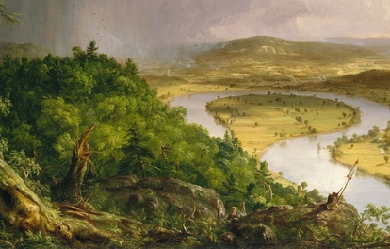
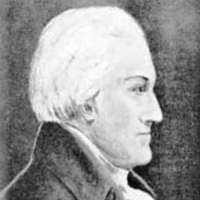
Henry Livingston, Jr. (October 13, 1748 - February 29, 1828) has been proposed as being the uncredited author of the poem “A Visit from St. Nicholas”, more popularly known (after its first line) as “The Night Before Christmas.” Credit for the poem was taken in 1837 by Clement Clarke Moore, a Bible scholar in New York City, nine years after Livingston’s death. It wasn’t until another twenty years that the Livingston family knew of Moore’s claim, and it wasn’t until 1900 that they went public with their claim. Since then, the question has been repeatedly raised and argued by experts on both sides. In 2000, Professor Don Foster made a strong case for Livingston’s authorship, while Professor Stephen Nissenbaum and manuscript dealer Seth Keller, who had owned a Moore manuscript copy of the poem at the time of Foster’s book, argued for Moore. Fifteen years later New Zealand scholar and Emeritus Professor of English Literature MacDonald P. Jackson invested over a year of research statistically analyzing the poetry of both men. His conclusion: “Every test, so far applied, associates ”The Night Before Christmas" much more closely with Livingston’s verse than with Moore’s.” Biography Livingston was born on October 13, 1748, in Poughkeepsie, New York, to Henry Livingston, Sr. and Susannah Conklin. In 1774, Livingston married Sarah Welles, the daughter of Reverend Noah Welles, the minister of the Stamford, Connecticut Congregational Church. Their daughter Catherine was born shortly before Livingston joined the army on a six months’ enlistment. In 1776, their son Henry Welles Livingston was born; the child was fatally burned at the age of fourteen months and, when another son was born, he was given the same name, according to the common practice of necronyms. Livingston farmed. Sarah died in 1783, and the children were boarded out. During this period Livingston began writing poetry. Over the next ten years, Livingston was occupied with poetry and drawings for his friends and family, some of which ended up in the pages of New York Magazine and the Poughkeepsie Journal. Although he signed his drawings, his poetry was usually anonymous or signed simply “R”. Ten years to the day after Sarah’s death, Livingston remarried. Jane Patterson, at 24, was 21 years younger than her husband. Their first baby arrived nine months after the wedding. After that, the couple bore seven more children. It was for this second family that Henry Livingston is believed by some to have written the famous poem known as “A Visit from St. Nicholas” or “The Night Before Christmas”. This famous Christmas poem first appeared in the Troy Sentinel on December 23, 1823. There seems to be no question that the poem came out of the home of Clement Moore, and the person giving the poem to the newspaper, without Moore’s knowledge, certainly believed the poem had been written by Moore. However, several of Livingston’s children remembered their father reading that very same poem to them fifteen years earlier. As early as 1837, Charles Fenno Hoffman, a friend of Moore’s, put Moore’s name on the poem. In 1844, Moore published the poem in his own book, Poems. At multiple times in his later life, Moore wrote out the now famous poem in longhand for his friends. Dispute over authorship Because the poem was first published anonymously, various editions were for many years published both with and without attribution. As a result, it was only in 1859, 26 years after the poem first appeared in print, that Henry’s family discovered that Moore was taking credit for what they believed to be their father’s poem. That belief went back many years. Around 1807, Henry’s sons Charles and Edwin, as well as their neighbor Eliza (who would later marry Charles) remembered their father’s reading the poem to them as his own. Following their father’s death in 1828, Charles claimed to have found a newspaper copy of the poem in his father’s desk, and son Sidney claimed to have found the original handwritten copy of the poem with its original crossouts. The handwritten copy of the poem was passed from Sidney, on his death, to his brother Edwin. However, the same year that the family discovered Moore’s claim of authorship, Edwin claimed to have lost the original manuscript in a house fire in Wisconsin, where he was living with his sister Susan. By 1879, five separate lines of Henry’s descendants had begun to correspond among themselves, trying to compare their family stories in the hope that someone had some proof that could be brought forward, but there was no documentation beyond family stories. In 1899, even without proof, Sidney’s grandson published the first public claim of Henry’s authorship in his own newspaper on Long Island. The claim drew little attention. In 1920, Henry’s great grandson, William Sturgis Thomas became interested in the family stories and began to collect the memories and papers of existing descendants, eventually publishing his research in the 1919 issue of the Duchess County Historical Society yearbook. Thomas provided this material to Winthrop P. Tryon for his article on the subject in the Christian Science Monitor on August 4, 1920. Later, Moore descendants arranged to have an elderly family connection, Maria Jephson O’Conor, depose about her memories of Moore’s claim of authorship. On independent grounds, Don Foster, Professor of English at Vassar, has argued that Livingston is a more likely candidate for authorship than Moore. Foster’s claim, however, has been countered by document dealer and historian Seth Kaller, who once owned one of Moore’s original manuscripts of the poem. Kaller has offered a point-by-point rebuttal of both Foster’s linguistic analysis and external findings, buttressed by the work of autograph expert James Lowe and Dr. Joe Nickell, author of Pen, Ink and Evidence. There is no proof that Livingston himself ever claimed authorship, nor has any record ever been found of any printing of the poem with Livingston’s name attached to it. References Wikipedia—https://en.wikipedia.org/wiki/Henry_Livingston,_Jr.

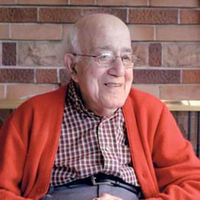
Carl Rakosi (November 6, 1903– June 25, 2004) was the last surviving member of the original group of poets who were given the rubric Objectivist. He was still publishing and performing his poetry well into his 90s. Early life Rakosi was born in Berlin and lived there and in Hungary until 1910, when he moved to the United States to live with his father and stepmother. His father was a jeweler and watchmaker in Chicago and later in Gary, Indiana. The family lived in semi-poverty but contrived to send him to the University of Chicago and then to the University of Wisconsin–Madison. During his time studying at the university level, he started writing poetry. On graduating, he worked for a time as a social worker, then returned to college to study psychology. At this time, he changed his name to Callman Rawley because he felt he stood a better chance of being employed if he had a more American-sounding name. After a spell as a psychologist and teacher, he returned to social work for the rest of his working life. Early writings At the University of Wisconsin–Madison, Rakosi edited the Wisconsin Literary Magazine. His own poetry at this stage was influenced by W. B. Yeats, Wallace Stevens, and E. E. Cummings. He also started reading William Carlos Williams and T. S. Eliot. By 1925, he was publishing poems in The Little Review and Nation. Pound and the Objectivists By the late 1920s, Rakosi was in correspondence with Ezra Pound, who prompted Louis Zukofsky to contact him. This led to Rakosi’s inclusion in the Objectivist issue of Poetry and in the Objectivist Anthology. Rakosi himself had reservations about the Objectivist tag, feeling that the poets involved were too different from each other to form a group in any meaningful sense of the word. He did, however, especially admire the work of Charles Reznikoff. Later career Like a number of his fellow Objectivists, Rakosi abandoned poetry in the 1940s. After his 1941 Selected Poems he dedicated himself to social work and apparently neither read nor wrote poetry. Years earlier, shortly after his twenty-first birthday, Rakosi had legally changed his name to Callman Rawley, believing that he would not find work with his foreign-sounding name. Under his adopted name, he served as head of the Minneapolis Jewish Children’s and Family Service from 1945 until his retirement in 1968. A letter from the English poet Andrew Crozier about his early poetry was the trigger that started Rakosi writing again. His first book in 26 years, Amulet, was published by New Directions in 1967 and his Collected Poems in 1986 by the National Poetry Foundation. These were followed by several more volumes and by readings across the United States and Europe. In early November 2003, Rakosi celebrated his 100th birthday with friends at the San Francisco Public Library. Upon his death Jacket Magazine editor John Tranter observed the following: Poet Carl Rakosi died on Friday afternoon June 25 at the age of 100, after a series of strokes, in his home in San Francisco. My wife Lyn and I were passing through California in November 2003, and we stopped by to have a coffee with Carl at his home in Sunset. By a lucky coincidence, it happened to be his 100th birthday. He was, as always, kind, thoughtful, bright and alert, and as sharp as a pin. We felt privileged to know him. External links Rakosi at Modern American Poetry The Carl Rakosi Papers in the Mandeville Special Collections Library at UC San Diego Carl Rakosi Reading and Interview on KPFA’s Ode To Gravity, 13 May 1971 (from The Internet Archive) Obituary in The Guardian, UK Carl Rakosi feature at Jacket Magazine includes Rakosi in conversation with Tom Devaney & Olivier Brossard; link to audio recordings at University of Pennsylvania, and poems, dedications & remembrances from Jane Augustine, Robert Creeley, Laurie Duggan, Michael Heller and Kent Johnson “Add-Verse” a poetry-photo-video project Rakosi participated in References Wikipedia—https://en.wikipedia.org/wiki/Carl_Rakosi

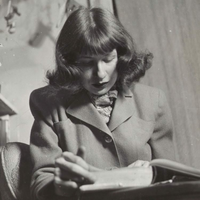
Amy Clampitt (June 15, 1920– September 10, 1994) was an American poet and author. Life Amy Clampitt was born on June 15, 1920 of Quaker parents, and brought up in New Providence, Iowa. In the American Academy of Arts and Letters and at nearby Grinnell College she began a study of English literature that eventually led her to poetry. She graduated from Grinnell College, and from that time on lived mainly in New York City. To support herself, she worked as a secretary at the Oxford University Press, a reference librarian at the Audubon Society, and a freelance editor. Not until the mid-1960s, when she was in her forties, did she return to writing poetry. Her first poem was published by The New Yorker in 1978. In 1983, at the age of sixty-three, she published her first full-length collection, The Kingfisher. In the decade that followed, Clampitt published five books of poetry, including What the Light Was Like (1985), Archaic Figure (1987), and Westward (1990). Her last book, A Silence Opens, appeared in 1994. She also published a book of essays and several privately printed editions of her longer poems. She taught at the College of William and Mary, Smith College, and Amherst College, but it was her time spent in Manhattan, in a remote part of Maine, and on various trips to Europe, the former Soviet Union, Iowa, Wales, and England that most directly influenced her work. Clampitt was the recipient of a 1982 Guggenheim Fellowship, a MacArthur Fellowship (1992), and she was a member of the American Academy of Arts and Letters and the American Academy of Poets. She died of cancer in September 1994.

